- Development
- Talent Pipeline
- Ambassadors

We race to everyone affected by diabetes
We are team novo nordisk and we are driving change in diabetes.
All of our inspiring athletes compete with type 1 diabetes. As the world’s first all-diabetes professional cycling team, we show what is possible with diabetes.
latest news from the team
Attack filled finale at circuit de wallonie, recent success in turkey sparks confidence for tnn as wallonie beckons, tour of turkey ends with neutralization of final stage, tour of turkey’s stage 7 hotly contested in a bunch sprint, tnn face tough mountain test on queen stage in turkey, sign up for, updates, discounts, partner offers and much more, sign up for our newsletter.
" * " indicates required fields
Celebrating 100 Years of Innovation
Before the discovery of insulin, a diagnosis of type 1 diabetes meant certain death for children. Today, we can live as professional athletes thanks to the discovery of insulin a century ago, and we are taking this year to celebrate. As a result of ground breaking medical innovation and progress in diabetes management during the past 100 years, our team is able to race and perform today alongside all other pro cycling teams while inspiring others living with diabetes to pursue their dreams.
upcoming races
Our vision for what is possible with diabetes.
Our hope is that one day, we will realize a future with no stigmas around diabetes. That one day, people without diabetes will be able to empathize with just how much effort goes into managing blood glucose and join our team in cheering these inspiring athletes toward their goals. Our hope for the future is that, no matter where people are born, those diagnosed with diabetes will have the same access to insulin, monitoring, education, and empowerment needed to live healthy and fulfilling lives.
With A Team This Strong, Anything is Possible
Novo Nordisk has been one of the insulin innovators since the beginning. They’ve helped to change the world and reshape what it means for people to live with diabetes. It’s why they are the perfect partner for our cycling team. We are a pro cycling team of athletes from all over the world. We are backed by all 45,000 employees working at Novo Nordisk and together we are Team Novo Nordisk!
Driving Change in Diabetes
Sign up to receive exclusive product discounts, early access to giveaways, and Q&A opportunities with our team.

Frequently Asked Questions
Every year, we decide where to direct the funds. The first year, JDRF was the beneficiary. The second year, we decided to help the clinic that was instrumental in helping us and our son Lukas understand, learn, manage, function and progress with this disease. All future rides benefit the Youth Diabetic Clinic at the Royal Victoria Health Centre.
If you are participating, you can register for $75.00 or more if you are able to. Electronic donations are closed for the 2023 year. If you'd still like to make a donation please contact us directly.
Registration is $75 per person and free for youth younger than 16. None of this fee goes to fundraising but is directed at the Ride's organization and production fees. Everyone is highly encouraged to fundraise by starting their own fundraising page and distributing to their network. We would hope everyone can raise a minimum of $250 but of course there is no limit on the maximum!"
Each participant will receive a lunch bracelet upon registration. The Heights kitchen will prepare individual boxed lunches to be handed to participants at the finish. They were a highlight last year! They can be enjoyed at the Heights inside or outside or some may wish to take their meal home if they are tight on time.
*Participants registering after September 15th, might not be assured of a post-ride meal due to ordering requirements.
This is NOT a race. Riders are obligated to ride respecting traffic rules including stop signs, slowing down for railroad crossings, maximum 2 riders abreast (if more than 3 riders), wearing a helmet. We highly recommend having a white light on the front and a red light on the back of your bike at all time, even if the event takes place during daytime.
Ontario Cycling Association guidelines for sanctioned mass cycling participation events dictates cycling groups should be limited to 8 cyclists.
There will be a sweep vehicle driving behind the last rider of each route in case a rider cannot continue due to physical / health issues or a mechanical problem unable to be fixed on the road.
Odyssey Medical will provide first aid services for the event this year. They will have a crew at the Heights chalet and another to head to an injured rider on course.
Friends and family members are highly encouraged to come and support riders. Along the routes, on the climbing sections, at rest stations and at the finish line, the more energy and cheering supporters the better atmosphere it is for all participants.
Sunday September 22 nd 2024.
It will start and finish at the Heights Ski and Country Club, 1106 Horseshoe Valley Road West, Barrie, Ontario.
The road routes are challenging. The shortest road route, the 25K, is still quite hilly. Please be assured all riders can ride hilly roads for up to 2 hours.
For those uncomfortable with the roads or the hills, we have added a Trail route! Gorgeous 6.5KM route in the Copeland Forest easily accessed from the parking lot of the Heights. It can be ridden on any bike (gravel, hybrid, mountain) or people may wish to walk it!!
Yes they are.
You can use the change rooms at the Heights Ski Club.
There is one rest station for the 55+K and the 100K route (at around 25K and 67K respectively) on the 10 th line of Oro.
For the 25K, here is one rest station in Edgar’s Community Centre at Old Barrie road and the 4 th line. The riders on the 55+K could stop there as well as they roll by that intersection heading north on the 4 th .
All stations will have water, electrolyte powder, Cliff bars and a toilet facility (portable on the 10 th ).
There is a portable toilet at the rest stop on the 10 th line (55+K and 100K) and the Edgar Community Centre will have their bathroom available.
Each route will have a well identified vehicle following the last rider until that rider rolls in at the finish. They can pick you up and give you a ride back with your bike.
Enjoy your time out there. There is a sweep vehicle behind the last rider. However, you should be back before 2pm to enjoy lunch.
25K: Although not too long, it still has a few hills that will take some effort. Plan approximately 1 to 2 hours depending on individual pace.
55+K: That's last year's 50K but returning on 15-16 th Sideroad to get people off Old Barrie Road. Plan about 2-3 hours depending on individual pace.
100K: Same route as last year. Some elite riders were finishing in under 4 hours but plan 3:45-5.5 hours depending on individual pace.
Still have a question?
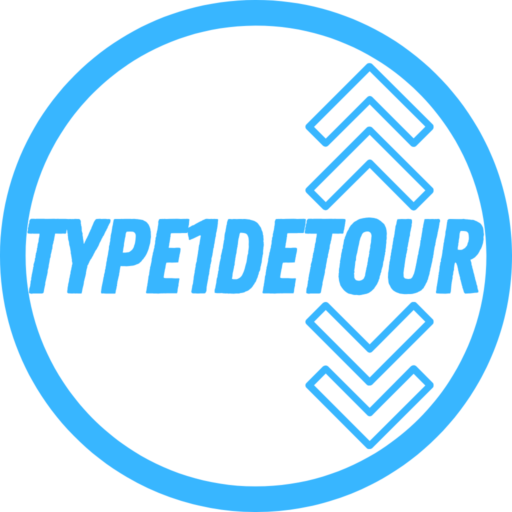
MEET TYPE1DETOUR
We are Chris and Amanda!
We are a fulltime RV travel family of 4. Chris and our oldest daughter both live with Type 1 Diabetes. We are documenting our journey to encourage others to get out and live the life they love, despite any of life’s obstacles! We encourage everyone to go Create Your Own Detour
We decided to stop living for LATER and start living for NOW!
We moved into our 2022 Grand Design Solitude 3950BH-R on July 13, 2021. We have been living full-time in our RV since then exploring the country one detour at a time.
As full-time travelers and seasoned digital marketers we know what both brands and users are looking for. We feel there is no better way to market your product than with real life users and organic content.
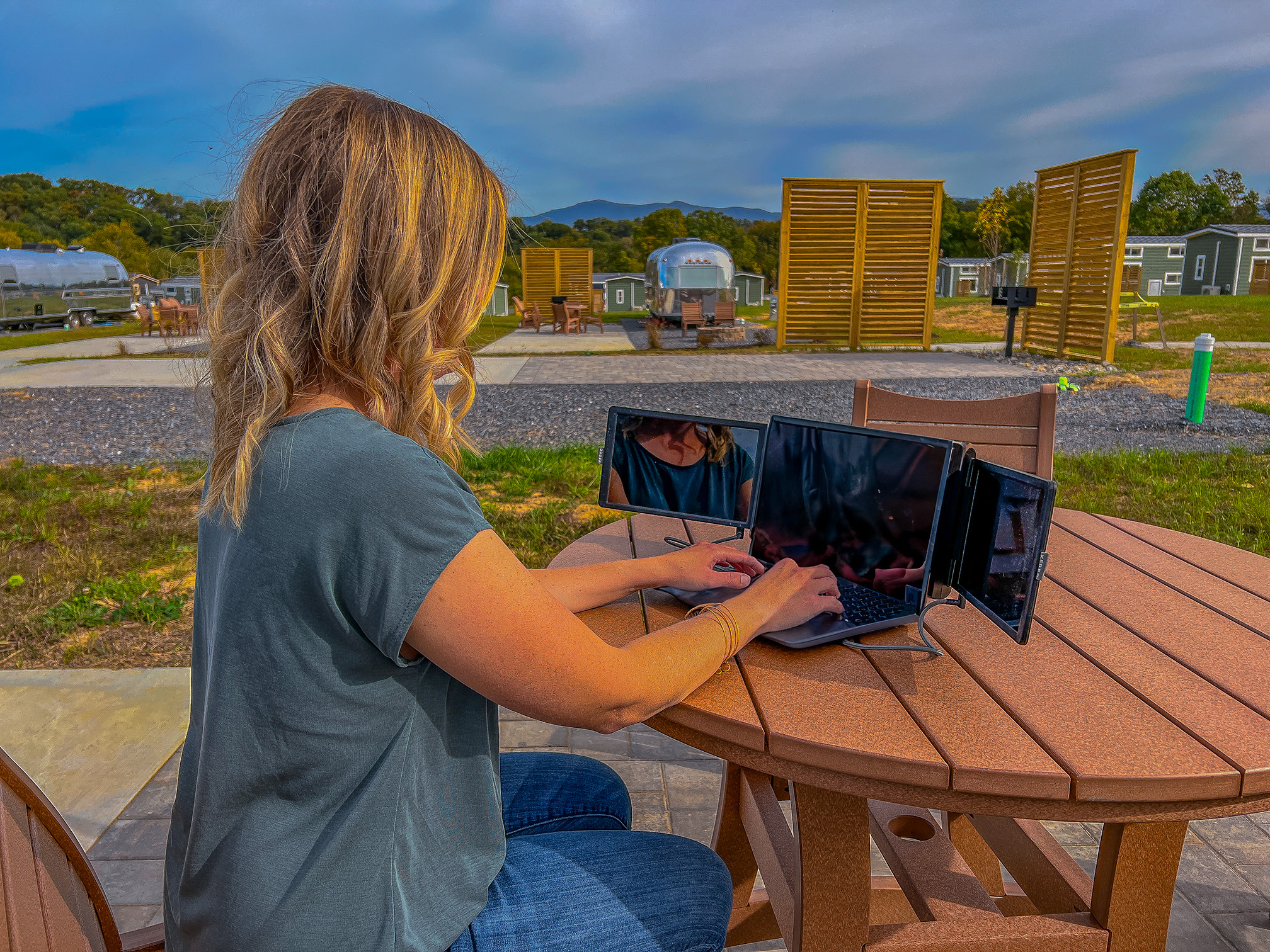
Brand Collaborations
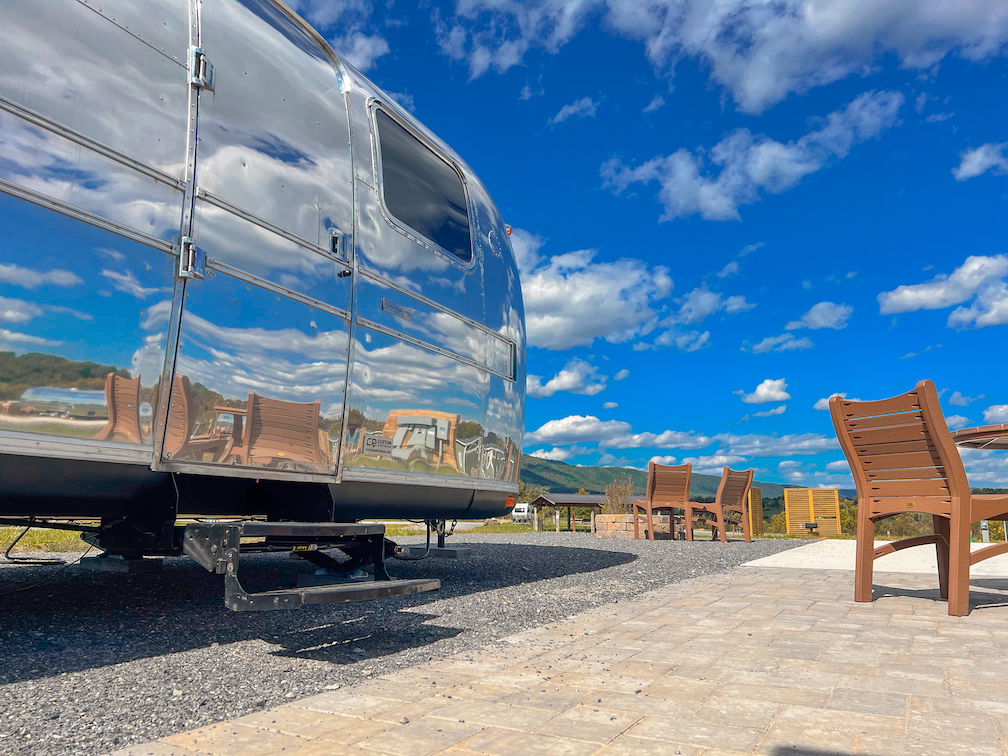
user generated content (ugc)

Article Creation

We Think you Can Fit in One of Our Workshops
Giro d'Italia stage 5 Live - Will Jonathan Milan win again?
Tour de france 2021: the essential race guide.
All you need to know, from the contenders to race and stage-by-stage analysis

The 2021 Tour de France is almost upon us with the Grand Départ set for June 26, and 21 mouth-watering stages to look forward to as the race takes in Brittany, two individual time trials, a double assault on Mont Ventoux and the customary finish on the Champs Élysées in Paris on July 18.
The 108th edition of the race will see defending champion Tadej Pogačar (UAE Team Emirates) aim to defend his crown against Primoz Roglič (Jumbo-Visma), Geraint Thomas (Ineos Grenadiers) and a host of other yellow jersey contenders over what is an intriguing and multi-layered route profile.
After a mountain-heavy Tour de France in 2020, race organisers ASO have opted for a more traditional and classic affair this time around, with the race reverting to hosting two long individual time trials for the first time since 2013.
In fact, on the face of it, the profile and route of the 2021 edition of the Tour de France is somewhat of a throwback to a Jean-Marie Leblanc style of race – in that the route suits a strong time triallist and puts the pure climbers on the back foot almost immediately. However, there are deeper levels and dimensions to Christian Prudhomme’s opus.
There are just three summit finishes in total, 58km of time trialling – a lot for a modern-day Tour – and eight stages for the sprinters. Prudhomme has also moved away from packing the route with a barrage of new climbs or prolonged periods in the Jura, Massif Central or Vosges mountain regions.
That being said, Prudhomme has cleverly concocted a route that marries some of the most iconic of French cycling furniture – Mount Ventoux, Brittany, the Col de Port, Pau, and the Tourmalet – and blended those ingredients with several truly engaging aspects.
There may only be three summit finishes, and many of the staple Alpine climbs are missing, but there are stages that could be defined just as much for their descents as the climbs they included, with ASO attempting to nullify the typically late mountain-top attacks by encouraging riders to go on the offensive even earlier.
Prudhomme may have built this Tour on traditional foundations, with two days in the Alps and five in the Pyrenees, but he has also taken risks too – something Leblanc rarely did. His 2021 route is peppered with stages that could easily be turned upside down by crosswinds and potential ambushes, especially around Narbonne, Nimes, and Carcassonne. The four days in Brittany – although a replacement for the Copenhagen Grand Départ – could see the race lead change almost daily, while the first time trial on stage 5 has enough road to create a pecking order and draw out the climbers ahead of the Alps.
Overall, this is a route that perhaps doesn’t ignite the immediate excitement or glamour that some of Prudhomme’s recent ventures have. Ventoux aside, there are no gimmicks, but this is still a highly engaging route and one that provides all the landscape the riders need to make compelling Tour de France.
The Tour de France contenders – Pogačar, Roglič and Ineos
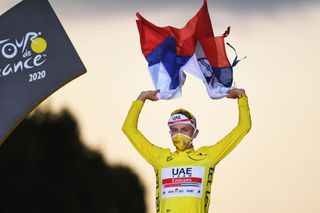
Tadej Pogačar (UAE Team Emirates) comes into the race as the reigning champion so the young Slovenian starts his Tour defence under completely different circumstances to last year, when he was somewhat of an underdog. His smash and grab at La Planche des Belle Filles last summer was nothing short of astonishing but it’s fair to say that he benefitted from the fact that he and his team didn’t need to control any of the race. Instead, they wisely allowed Jumbo-Visma to wear themselves out, but this time around Pogačar will not be afforded such comforts and from the moment he arrives in Brest for the Grand Départ the entire race will be watching his every move. That said, Pogačar’s UAE Team Emirates squad are far from average. In Marc Hirschi, David de la Cruz, Brandon McNulty, Davide Formolo, and Rafal Majka, the defending champion has the core of an excellent team. They aren’t the strongest team in the race but they don’t necessarily have to be.
On paper, Pogačar’s main threat is the rider he crushed in the final time trial last year, Primoz Roglič . The Jumbo-Visma leader has spent the last few months secluded up at altitude, shunning the standard pre-Tour race programme for a tailor-made and extended period of training. He has not been seen at a race since Liège-Bastogne-Liège back in late April but the 31-year-old will no doubt bring his best condition to the race. There are reasonable questions over the current form of his team but while the Dutch outfit may not have the same sparkle they had last year, they are far from mediocre, with Sepp Kuss, Wout van Aert and Steven Kruijswijk providing worthy cover.
The strongest ensemble in this year’s race comes from Ineos Grenadiers who line up with 2018 winner Geraint Thomas , Richard Carapaz and Richie Porte among their cast. The British team, smarting from last year’s defeat, will be looking to win back-to-back Grand Tours after Egan Bernal’s Giro d’Italia success in May, and while they do not have a contender as lethal as Pogačar or Roglič, their collective muscle could be just as important. When the leading group are down to 10 riders in the mountains it’s possible that half of that contingent could be made up of Ineos riders and that's a level of dominance that cannot be ignored. Roglič and Pogačar cannot chase every move and while attacking might be the Slovenian pair’s best form of defense, they could just as easily become isolated.
For Ineos Grenadiers, the dilemma comes in the form of which leader to back. Thomas has the better Tour record, of that there’s no doubt, but he looked below his best at the Dauphiné while Carapaz dominated the Tour de Suisse. Porte is somewhat of a dark horse but the two time trials along the route probably edge Thomas ahead in the team pecking order.
Outside of the Ineos, UAE and Jumbo stables, there are a number of overall contenders with hopes of challenging for the podium. Marc Soler, Enric Mas , Miguel Angel Lopez and Alejandro Valverde are in line for protected spots at Movistar – although it’s surely Mas who leads the line after his fifth place last year. Julian Alaphilippe will shoulder Deceuninck QuickStep’s ambitions but will once again be forced to fend for himself in the mountains, while Rigoberto Uran (EF Education-Nippo) looks to be back to his 2017 level when he finished on the podium.
There are three Australians – leaving Porte aside – with genuine top-ten hopes. Ben O’Connor has finished top ten in his last two weeklong WorldTour stage races and it’s little wonder that AG2R Citroën recently extended his contract. Lucas Hamilton has been given the responsibility of leading Team BikeExchange's GC bid with Simon Yates targeting stage wins, while Jack Haig was fifth in the recent Dauphiné and has an in-form Bahrain Victorious at his disposal.
Wilco Kelderman forms part of a very strong Bora-Hansgrohe squad that includes Emanuel Buchmann and Patrick Konrad , and Nairo Quintana (Arkéa-Samsic) remains a threat even if his star has been waning for some time.
Along with Alaphilippe, the French have real hope via Guillaume Martin (Cofidis), who looks to be peaking on time this year after he faded in the second half of last year’s race, but it’s David Gaudu at Groupama-FDJ who instills the most belief from the home nation. With Thibaut Pinot still on the sidelines, Gaudu has the chance to stake his claim as a Tour de France contender in his own right. He was mightily impressive at the Vuelta last year, winning two stages and finishing eighth overall. This year the 24-year-old has been consistent and the next natural progression for him would be a top-five in Paris.
Israel Start Up-Nation arrives at the race with Michael Woods as their protected GC asset. That leaves four-time Tour winner Chris Froome to act in the unfamiliar role of road captain.
Below those riders there are a number of talented outsiders worth watching, with Pello Bilbao (Bahrain Victorious), Jakob Fuglsang (Astana-Premier Tech), Esteban Chaves (Team BikeExchange), Michael Woods (Israel Start–Up Nation), Tao Geoghegan Hart (Ineos Grenadiers), Dan Martin (Israel Start–Up Nation) and Warren Barguil (Arkéa-Samsic) are all flying under the radar.
The Tour de France sprinters – Ewan, Démare, Merlier, Cavendish or Bennett?
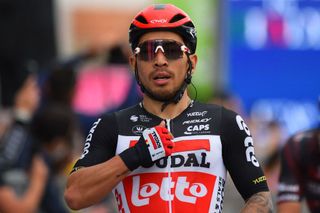
With up to eight stages within this year’s race intended for the sprinters, there’s no hiding away from the fact that the fastest riders in the world will be hogging their fair share of headlines in this year’s race. The first dedicated sprint stage arrives on stage three and other than the block of stages in the Pyrenees, the rest of the flat days are liberally dotted throughout weeks 1, 2, and 3.
There are question marks over the participation of Sam Bennett , who is still recovering from a knee injury, and while Deceuninck-QuickStep boss Patrick Lefevere publicly announced that he has no ‘plan B,’ that’s not strictly true. Mark Cavendish – a 30-time stage winner – is waiting in the wings and after his recent exploits in Belgium, he looks like the fiery, competitive rider of old. Michael Mørkøv needs someone to lead out after all, and if Bennett proves unable to prove his fitness in time, the veteran Manxman could prove the perfect tonic for Lefevere’s unease.
The fastest rider in the race, however, is likely to be Caleb Ewan , who looks like a prime contender for the green jersey, let alone a stage win or two. The Australian has almost the entire Lotto Soudal team at his disposal and, after his double at the Giro d’Italia, looks well on course to add to his tally of five Tour stages.
When it comes to the WorldTour, Arnaud Démare has been a pale imitation of the rider who dominated the Giro sprints last year but his flat-track bully performances in recent months suggest that the Groupama-FDJ rider is approaching something like his best form just in time. Tim Merlier looks like a rider to watch after his stunning start to the year, while his Alpecin-Fenix teammate and leader Mathieu van der Poel can no doubt play a part on any stage that isn’t in the mountains or a time trial.
Wout van Aert (Jumbo-Visma) can sprint with the best riders but his disrupted run-in and operation to remove his appendix has left question marks over his condition. Even a Van Aert at 80 per cent is a threat but Peter Sagan – the seven-time Green jersey winner – remains the biggest threat for Bennett’s title defence if the Irishman does make it to Brest. Sagan won a stage in the Giro and the points competition and, despite Bora-Hansgrohe’s insistence on stacking a team with climbers, looks like the favourite for all but the flattest of stages. Sonny Colbrelli has never won a Grand Tour stage but was in blistering form at the recent Dauphiné, while Jasper Philipsen (Alpecin-Fenix), Alexander Kristoff (UAE Team Emirates), Mads Pedersen (Trek–Segafredo), Nacer Bouhanni (Arkéa-Samsic), Michael Matthews (Team BikeExchange) and Bryan Coquard (B&B Hotels p/b KTM) are all worth a mention.
The Tour de France Route – a stage by stage guide
All times local – CEST. All finish times according to the earliest predicted schedule.
Stage 1 / Saturday June 26 / Brest - Landerneau, 197.8km / Times: 12:10 - 17:00
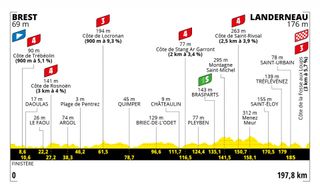
The 2021 Tour de France kicks off with what could be a thrilling stage between Brest and Landerneau. This is the first time since 2008 that the Tour has started in Brest but rather than opting for a prologue or short time trial ASO have decided to cram six climbs within the opening 197.8km of this year’s race. Although none of the ascents will worry the peloton too much, this has all the makings of a difficult day in the saddle with the pace likely to be relentless throughout. With no yellow jersey or pecking order established, tensions will run high, while the added complication from possible cross-winds will leave several overall contenders nervous.
Crashes, splits and tactical mistakes will all play a part but the gradient on the final climb does at least ease in the final 500 metres before the line. That said, many of the pure sprinters will have been distanced by that point and it should be a puncheur who comes out on top to take the stage and the first maillot jaune of this year’s race.
Stage 2 / Sunday June 27 / Perros-Gueirec - Mûr-de-Bretagne, 183.5km / Times: 13:10 - 17:30
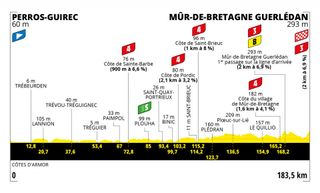
Stage 2 of the Tour de France is a day of two halves. Unlike the opening day of racing, when the climbs were evenly spread out, stage 2 between Perros-Guirec and the top of the Mur-de-Bretagne has most of the six categorised climbs crammed into the second half of the stage, with two ascents of the Mur-de-Bretagne thrown in for good measure. That said, there’s relatively little in the way of flat roads between the start and the first climb at 72.8 kilometres.
The finale is technical and we’re likely to see the same riders who contested stage 1 once again take centre stage. Assuming the peloton starts the final climb in one piece, the gaps between the overall contenders should be relatively small come the line but last time the race finished here, back in 2018, Daniel Martin attacked with around one kilometre to go and everyone of the top-three finishers in Paris lost time. Once again, this isn’t a day for the peloton to relax.
Stage 3 / Monday June 28 / Lorient - Pontivy, 182.9km / Times: 13:10 - 17:24
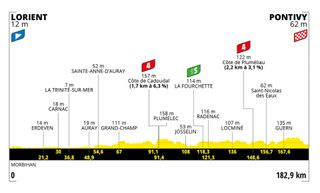
After two days that catered for the puncheurs the sprinters of this year’s Tour de France will be finally let off the leash. The stage departs Lorient, the hometown of former King of the Mountains winner Warren Barguil, but that’s where any attention directed towards the talismanic Frenchman ends, with the race hugging the coastline before heading inland, through the department of Morbihan, but before reaching the finish in Pontivy the peloton must climb the Côte de Cadoudal – known as the Breton Alpe d’Huez – and where stages have taken place in both 2008 and 2015. All the fine-tuning and training before the race will count for little in the heat of the finale and with such a huge prize up for grabs it may well come down to which sprinter, and his leadout, make the fewest mistakes.
Stage 4 / Tuesday June 29 / Redon - Fourgères, 150.4km / Times: 13:25 - 16:52
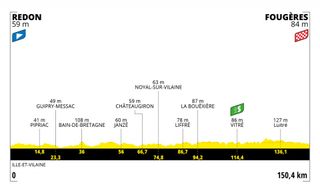
The Tour de France’s mini Tour of Brittany ends on stage 4 with another outing for the sprinters. At just 150.4 kilometres in length, this is shorter than the previous day and its part of ASO’s plan to increase the intensity within the race on days that might ordinarily set out as slow burners before igniting in a fierce sprint battle to the line. There are no categorised climbs to speak of between the start in Redon and the finish in Fougeres but this is a must-watch stage nonetheless. The entire stage takes place in the Ille-et-Vilaine region. The last time the race ended in Fougeres was in 2015 with Mark Cavendish taking the stage. It’s an identical finish this time around with the sprinters set to enjoy their second straight day of action before the stage 5 time trial.
Stage 5 / Wednesday June 30 / Changé - Laval, 27.2km / Times: 12:15 - 16:50
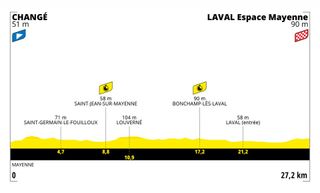
The Tour de France leaves Brittany on stage 5 and shifts up a gear with the first of two time trials in this year’s race, and while the opening two stages may have provided brief glimpses of a fight for the yellow jersey the 27.2 kilometre test between Changé and Laval Espace Mayenne will cause major changes to the overall standings. This is the longest individual time trial the Tour de France has held in the opening week since the 2008 edition. That year a vast amount of time separated the top contenders with the top 20 riders spread out over approximately a minute and a half and, in a race that has so far been judged by seconds, the aftershocks from this stage could determine the pattern of racing for the next two weeks.
Stage 6 / Thursday July 1 / Tours - Chàteauroux, 160.6km / Times: 13:55 - 17:26
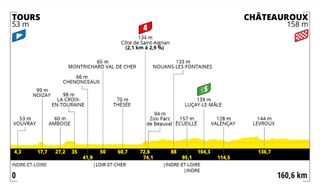
After the stage 5 time trial and a reshuffling at the top of the overall standings the attention turns back to the sprinters. However, while the stage profile looks tailor-made for the fastmen, with a limited amount of climbing on the menu, there is a threat of crosswinds and echelon action in this region if the winds pick up.
The 160.6 kilometre stage leaves Tours and heads east. For the first few hours of racing there should be very little to trouble the peloton as the race heads out of the cathedral city and ventures into picture-postcard châteaux and vineyard country. This should be a day for the sprinters, and Mark Cavendish won his first-ever Tour stage in the finish town of Châteauroux back in 2008.
Stage 7 / Friday July 2 / Vierzon - La Creusot, 249.1km / Times: 11:00 - 17:05
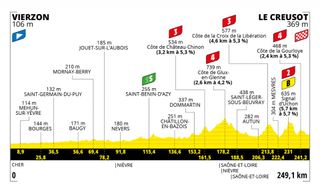
Stage 7 of the Tour de France is a day that should be finely balanced between a break succeeding or a reduced group of all-rounders deciding the day’s honours. The stage, which sees the race head east from Vierzon is the longest Tour stage in 21 years, totalling a whopping 249.1 kilometres.
This may not look like a day for the GC riders but this has potential ambush written all over it. The distance, coupled with the demanding second half will ensure only a small group contest the finish, and we could potentially see yet another change in race leadership.
Stage 8 / Saturday July 3 / Oyonnax - Le Grand Bornand, 150.8km / Times: 13:10 - 17:06
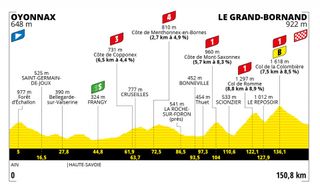
The hills on stage 7 were mere an appetizer for what’s in store on stage 8 of the Tour de France as the race heads into the Jura and Alpine mountain ranges for the first time this year. There may not be a summit finish in store for the peloton but with five categorised climbs, plus an uncategorised uphill start, this will be a rude awakening for the riders after a week of relatively flat racing broken up by the odd short, sharp ascent.
The stage culminates with the first category ascent of the Col de la Colombière and a finish at Le Grand-Bornand but before then the peloton will tackle some rugged terrain and obstacles in just 150.8 kilometres of racing.
The addition of the Cote de Mont-Saxonnex, new compared to the 2018 version of this finale, just adds another level of difficulty to the stage. Back in 2009, when the race also climbed the Romme-Colombière combo several GC contenders, including Lance Armstrong, were dropped with Frank Schleck taking the honours.
Stage 9 / Sunday July 4 / Cluses - Tignes, 144.9km / Times: 13:00 - 17:30

Two years after a stage on the Tour de France to Tignes was washed away by flash floods ASO have made true on their promise of bringing the race back, and this should be another mountain blockbuster with five climbs peppered along the 144.9-kilometre route between Cluses and the ski station at Tignes.
After taking in some of the most stunning scenery of the race so far the riders begin the long descent down into Bourg-Saint-Maurice followed by the long steady climb of the Montée de Tignes. It’s 21 kilometres in length and starts off relatively steadily but as the road continues the climb the gradient really digs in around the point of the Les Brevières. This a brute of a climb and the gaps between the overall contenders could stretch into minutes, and while this isn’t a summit finish – with the road flattening out with 2 kilometres to go – it’s still the hardest stage of the Tour so far.
Rest day 1 / Monday July 5
Stage 10 / Tuesday July 6 / Albertviille - Valence, 190.7km / Times: 13:05 - 17:23
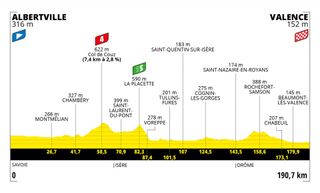
Following the first rest day in this year’s Tour de France the racing recommences with a 190.7km stage from Albertville to Valence. The race takes us away from the Alps and it’s a day for the sprinters but the threat of potential crosswinds and echelons in the final part of the stage makes this anything but an easy day in the saddle. Michael Matthews won a stage in these parts back in 2017, beating Edvald Boasson Hagen and John Degenkolb to the line in Romans sur Isère, on a day that was also hit by crosswinds. That day Chris Froome and Team Sky put Dan Martin and Alberto Contador to the sword and even though their time losses were manageable every second counts at this point.
However, assuming that the sprinters’ teams remain in contention this could be a hugely important day in the battle for the Green jersey with a flat run into Valence perfectly suited to a bunch gallop. Chepe González – who certainly wasn’t a sprinter – won from a breakaway in Valence all the way back in 1996.
Stage 11 / Wednesday July 7 / Sorgues - Malaucène, 198.9km / Times: 12:00 - 17:18

Stage 11 is all about the climbers with the race taking on the highly anticipated doubled ascent of Mont Ventoux. Before the riders get to the first ascent they leave Sorgues and take on two small fourth category climbs, the Cote de Fontaine-de-Vaucluse followed by the first category Col de la Liguière. The riders will then descend into Sault before beginning the first ascent of ‘the Giant of Provence’. The first time up takes the easiest of three possible routes to the top but it’s also the longest, with 24.3 kilometres of climbing facing the riders. The toughest gradient come into view around Chalet Reynard with the riders emerging from the tree-covered landscape and reaching the barren slopes that make Mont Ventoux so revered. At the summit the riders drop down into Malaucène for the first time via one of the fastest descents they’ll face in the entire race before taking a short uncategorised climb to Bédoin and then the final ascent of the Ventoux. At 15.7 kilometres long, and with an average 8.8 per cent, the road is simply relentlessly steep from the very start. At Chalet Reynard they hit the roads they climbed earlier before cresting the summit and taking on a second breakneck descent into Malaucène for the finish.
Stage 12 / Thursday July 8 / Saint-Paul-Trois-Châteaux - Nîmes, 159.4km / Times: 13:30 - 17:12
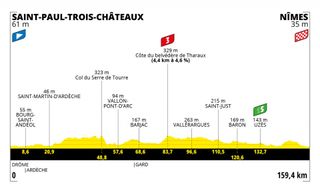
After the double ascent of Mont Ventoux on stage 11 the race returns to less testing terrain with a 159.4 kilometre stage from Saint-Paul-Trois-Châteaux to Nîmes. As with stage 10, however, appearances can be deceptive and despite only one short climb positioned mid-way through the stage there’s another chance that echelons and crosswinds could play their part in proceedings. At Vallon Pont d’Arc the stage heads south and into the Gard department. The exposed roads at this point could be a key if the wind picks up before the peloton hits the third cat climb of the Côte du Belvédère de Tharaux. With less than 30 kilometres to go the road heads due south to Nîmes for the expected bunch sprint, where Alexander Kristoff and Caleb Ewan are both past winners. This could be either a relatively quiet day in the Tour or one of the most intense battles of the race so far.
Stage 13 / Friday July 9 / Nîmes - Carcassonne, 219.9km / Times: 12:05 - 17:15
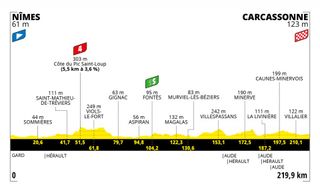
After finishing in Nimes on stage 12, the riders still left in the Tour de France will leave the same city in the Occitanie region of southern France and head towards the historical city of Carcassonne. On paper this looks like a relatively straightforward transition stage as the race tip-toes towards the Pyrenees but the finer details of this 219.9 kilometre jaunt tell a different story. Once more the threat of crosswinds loom large and while there is only one fourth category climb between the start and Carcassonne the majority of route is rolling. It’s no coincidence that no stage has ever ended in a bunch sprint in Carcassonne with Magnus Cort Nielsen winning from the break last time the race reached the walls of the medieval citadel that dominate the hill-top town, back in 2018.
Stage 14 / Saturday July 10 / Carcassonne - Quillan, 183.7km / Times: 12:15 - 16:48
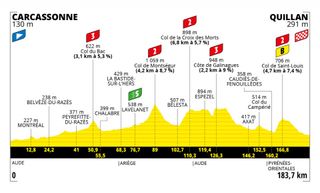
For a second day in a row the Tour de France departs from the previous day’s finish and stage 14 of the race heads out of Carcassonne for a 183.7 kilometre journey south to the small town of Quillan. On paper this looks like a nailed on day for the breakaway with five categorised climbs peppering the route all the way towards the 17 kilometre descent from the top of the last ascent into the finishing town. The most likely scenario will see the sprinters’ teams sit back after the last few days of hostilities while the GC riders opt for a calm day given what’s ahead of them in the coming days.
The stage could be decided by the final climb of the stage, the Col de Saint-Louis. The ascent is 4.7 kilometres long and has an average gradient of 7.4 per cent and will provide the perfect launch pad for the remnants of the break to attack each other before the final descent to the line.
Stage 15 / Sunday July 11 / Céret - Andorre-La-Vieille, 191.3km / Times: 12:20 - 17:28

Stage 15 from Ceret to Andorre-La-Vieille is one of the hardest in this year’s race. There are four categorised climbs along the 191.3 kilometre route but three of them are first category ascents, while the riders will reach the highest point in this year’s race, topping out at over 2,400 metres. What’s more the final climb of the day, the Col de Beixalis, has the potentially to blow the entire race apart. From the intermediate sprint at Olette the road continues to climb towards the summit of the Montee de Mont-Louis. A descent follows but there’s little valley road before the riders begin to climb the secondary Cole de Puymorens – a 5.8 kilometre climb with an average gradient of 4.7 per cent. That climb will bring the riders to just under 2,000 metres, and there’s only a short descent before the first category climb of the Port d’Envalira – with the Souvenir Henri Desgrange going to the first rider to reach the Tour’s highest point. The following descent brings the race deep into Andorra before the assault of the Col de Beixalis looms into view. At the summit the road plummets back towards the centre of Andorra with a steep and highly technical descent towards the line.
Rest day 2 / Monday July 12
Stage 16 / Tuesday July 13 / Pas de la Case - Saint-Gaudens, 169km / Times: 13:05 - 17:21
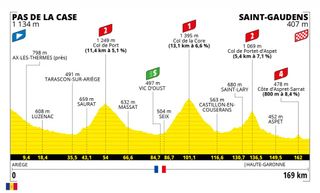
Stage 16 sees the race head back into France, and while the 169 kilometre jaunt from Pas de la Case to Saint-Gaudens is far from easy, the profile suggest that the win could be decided by a break. That said, racing after a rest-day can often throw up some surprises and if one of the riders in the top-ten is showing any signs of weakness or fatigue, expect no mercy from their rivals. After the Col de la Core the riders will descend into the valley before hitting the Col de Portet-d’Aspet. They then descend – passing the Fabio Casartelli memorial – before the last and shortest climb of the day, the Côte d’Aspret-Sarrat. It’s only 800 metres in length but there are certainly some difficult stretches and with the finish just a few kilometres away it should provide an excellent launchpad for any last minute attacks.
Stage 17 / Wednesday July 14 / Muret - Saint-Lary-Soulan Col du Portet, 178.4km / Times: 11:50 - 16:49
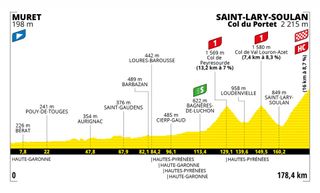
The Col du Portet, first introduced to the Tour de France in 2018, returns this year and comes at the end of a crucial day in the Pyrenees. Starting in Muret, the route heads southwest and the opening 115 kilometres or so are relatively flat until the peloton reach Bagnères-de-Luchon – exactly where the 2018 Tour stage started. From there the riders will on the first of three major ascents with the Col de Peyresourde first up. The riders will then make a breakneck descent into Loudenvielle before tackling the Col d’Avet. It’s shorter than the Peyresourde but with a gradient averaging 8 per cent it’s a severe test. Another fast but this time technical descent follows before the road kicks up for the final climb and the summit finish atop the Col du Portet. The 16-kilometre ascent suits the lightweight pure climbers perfectly with a tough opening section as the road climbs towards Espiaube. At that point the gradient briefly eases before the riders turn right, thus avoiding the road towards Pla d’Adet, and take on a relentless section of switchbacks. The gradient reaches over 10 per cent in the final kilometre and the time gaps here could be race defining.
Stage 18 / Thursday July 15 / Pau - Luz Ardiden, 129.7km / Times: 13:35 - 17:19
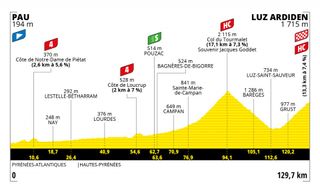
Stage 18, the final mountain stage of this year’s Tour de France is arguably one of the hardest days in the race, with two massive Pyrenean climbs – the Col du Tourmalet and a blockbuster finish at the top of Luz Ardiden. What’s more, the stage is just 129.7 kilometres in length, meaning that there will be little to no respite.
There are two small fourth category ascents in the first 54 kilometres of racing – the Côte de Notre-Dame de Pietat, and the Côte de Loucrup, before an intermediate sprint at Pouzac From there the race heads through Bagnères-de-Bigorre and gently rises south through Campan and Saint-Marie-de-Campan before the race really starts on the slopes of the Col du Tourmalet. There’s then a rapid descent through Barèges and into Luz-Saint-Sauveur before the race reaches the Pont du Napoleon bridge. The riders then start the second straight HC-category climb of the day to the summit of Luz Ardiden. The climb is 13.3 kilometres in length, and while the opening few hundred metres are relatively easy the climb ramps up drastically after the first kilometre.
Stage 19 / Friday July 16 / Mourenx - Libourne, 207km / Times: 12:20 - 17:06
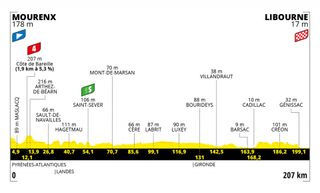
With the Pyrenees in the rearview the attention turns back to the sprinters on stage 19 with a 207 kilometre stage from Mourenx to Libourne. However it will be a tough day for the sprinters to control. The distance, coupled with the fact that peloton will be exhausted from five days in the mountains, will leave a number of teams somewhat unwilling to control a peloton for a long day in the saddle. This could also be the last chance for teams without a sprinter or a GC rider to potentially rescue their race and with a lumpy opening 50 kilometres a bunch sprint is far from a certainty.
Stage 20 / Saturday July 17 / Libourne - Saint-Emilion, 30.8km / Times: 13:05 - 17:19
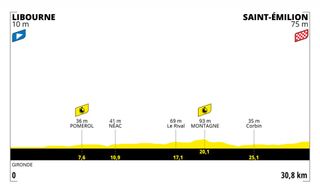
At 30.8 kilometre in length, the individual test between Libourne and Saint-Emilion is a flat affair with small rises and long drags that will perfectly suit the time trial specialists.
This is the course for the power specialists and even the technical sections along the route should be no problem for them. Any concerns will be purely reserved for the climbers, who after three weeks of racing could see their advantages obliterated in a painfully short amount of time.
Stage 21 / Sunday July 18 / Chatou - Paris Champs-Élysées, 108.4km / Times: 16:15 - 19:00
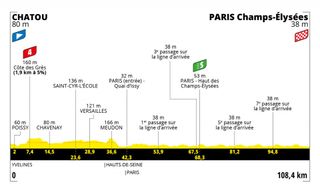
After three weeks of drama and excitement the Tour de France arrives in Paris for the final stage and a showdown between some of the best sprinters in the world on the Champs-Élysées. For the fourth year in a row the final stage of the race starts in Chatou, just west of the capital, but the route initially heads east for a brief while before doubling back on itself. At this point the pace will be relaxed with teams and riders soft-pedalling through the opening kilometres and using the opportunity to celebrate their achievements and reaching Paris to complete the Tour.
How to watch the 2021 Tour de France – live TV and streaming
Read on to find out how to watch the Tour de France via live stream, no matter your location, with ExpressVPN .
The 2021 Tour de France will be broadcast around Europe and Eurosport. A subscription to Eurosport Player costs £6.99 for a single month, £4.99 for a year-long monthly pass, or £39.99 for a 12-month pass.
GCN+ will also air the race in the UK and in select other territories around Europe. A year’s subscription to GCN+ now costs £39.99 / €39.99 / $49.99 after the end of a promotional price in February.
ITV4 will also be showing the race in the UK, with full full live coverage and highlights available. In Wales, S4C will be airing the race.
The Tour de France will be available to view in the USA on Peacock Premium . A seven-day free trial is available, while a subscription to Peacock Premium will set you back $4.99 (or $9.99 without ads) per month.
FloBikes will air the Tour de France in Canada. An annual subscription will set you back $149. SBS will air the race in Australia.
Around Europe, broadcasters include France TV in France, ARD in Germany, Sporza and RTBF in Belgium, Rai in Italy, and RTVE in Spain
If you live outside a broadcast zone or are on holiday outside your country and find that the live streams to be geo-restricted, you can get around this by getting access to them by simulating being back in your home country via a 'virtual private network', or VPN, for your laptop, tablet or mobile.
Our sister site TechRadar tested hundreds of VPNs and recommends the number-one VPN currently available as Express VPN. With ExpressVPN , you can watch on many devices at once including Smart TVs, Fire TV Stick, PC, Mac, iPhone, Android phone, iPads, tablets, etc.

Thank you for reading 5 articles in the past 30 days*
Join now for unlimited access
Enjoy your first month for just £1 / $1 / €1
*Read any 5 articles for free in each 30-day period, this automatically resets
After your trial you will be billed £4.99 $7.99 €5.99 per month, cancel anytime. Or sign up for one year for just £49 $79 €59

Try your first month for just £1 / $1 / €1
Get The Leadout Newsletter
The latest race content, interviews, features, reviews and expert buying guides, direct to your inbox!
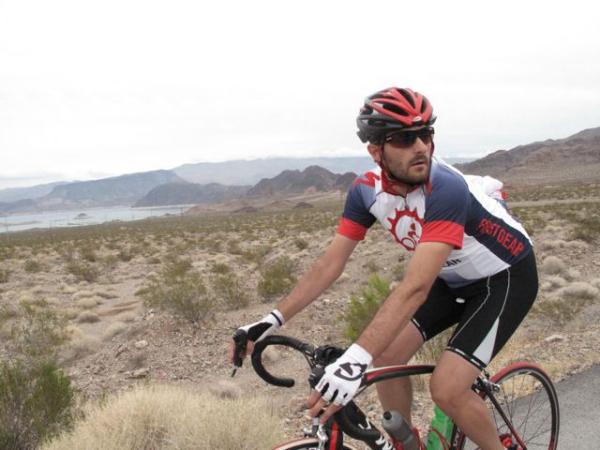
Daniel Benson was the Editor in Chief at Cyclingnews.com between 2008 and 2022. Based in the UK, he joined the Cyclingnews team in 2008 as the site's first UK-based Managing Editor. In that time, he reported on over a dozen editions of the Tour de France, several World Championships, the Tour Down Under, Spring Classics, and the London 2012 Olympic Games. With the help of the excellent editorial team, he ran the coverage on Cyclingnews and has interviewed leading figures in the sport including UCI Presidents and Tour de France winners.
‘It depends on what Pogačar wants to do’ – Oropa summit finish on stage 2 will shake Giro d’Italia
Giro d’Italia 2024 - Analysing the contenders
Tadej Pogačar opts for pink on pink at Giro d’Italia to avoid the wrath of the UCI
Most popular, latest on cyclingnews.
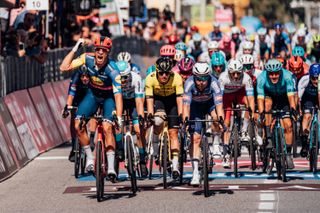
2026 Tour de France all-but-confirmed to start in Barcelona
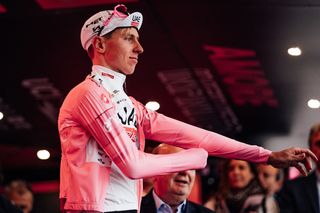
Which Pogačar was everyone expecting?
- International edition
- Australia edition
- Europe edition

Tour de France 2021: stage-by-stage guide
This year’s race begins in France’s cycling heartland before heading to the mountains and a climax in the Pyrenees
Stage one, Saturday 26 June, Brest – Landerneau 197.8km
The Tour opens with a loop through France’s cycling heartland, home to heroes of the past such as the five-times winner Bernard Hinault, and present-day aspirants such as Warren Barguil. A hilly route travels south to Quimper then returns north to finish close to the start, up a steep two-mile climb tailor made for France’s biggest current star, Julian Alaphilippe, who will be under intense pressure to deliver the stage win and yellow jersey. With more brief ascents approaching the finish crashes are inevitable as the field fights for position before the closing hill.
Stage two, Sunday 27 June, Perros-Guirec – Mûr-de-Bretagne 183.5km
More little climbs for a first reshuffle of the overall contenders. Again it’s Alaphilippe’s favoured terrain – another short, steeper ascent to the finish – but the Mur is tackled twice, the first time with 17km to go. Another favourite will be the Dutchman Mathieu van der Poel, cycling’s most exciting talent, who is making his Tour debut. The contest to be at the front for the climb is as daunting as the ascent itself; a crash or puncture will be costly. Earlier, the race visits Hinault’s old stamping ground of Saint-Brieuc, and the Badger would definitely have relished this finish.
Stage three, Monday 28 June, Lorient – Pontivy 182.9km
The first routine stage, with more nods to Brittany’s cycling past and present. The start close to Barguil’s home town of Hennebont will draw plenty of “Wawa” fans, and the route travels down the coast to Carnac of stone row fame, then passes Plumelec and the Cadoudal hill, a celebrated local race venue. A bunch sprint finish looks inevitable; Mark Cavendish returns to the Tour with Deceuninck-QuickStep after Sam Bennett was ruled out through injury, with Australia’s Caleb Ewan a big rival for stage wins and favourite for the green jersey.
Stage four, Tuesday 29 June, Redon – Fougères 150.4km
The race ventures towards Normandy but stops just short of the border at another town with cycling history, home of the late Albert Bouvet, the legendary “Bulldog”, who became a mainstay of the group that organises the Tour. By now the daily pattern will have been set: an early break of a handful of riders from the lesser French teams, scooped up in time for a bunch sprint finish. Along with Ewan, other favourites include the evergreen Peter Sagan, France’s Arnaud Démare, Tim Merlier of Belgium, the Norwegian Alexandr Kristoff and perhaps the Frenchman Nacer Bouhanni.
Stage five, Wednesday 30 June, individual time trial, Changé – Laval 27.2km
A first proper sort-out with a time trial long enough to create gaps but short enough that they shouldn’t be definitive. It’s a classic rolling course, climbing from the start and again towards the finish, an initial chance to assess 2021 winner Tadej Pogacar, runner-up Primoz Roglic, and 2018 winner Geraint Thomas, while short enough to suit Alaphilippe. It also suits specialists such as Belgian Victor Campenaerts and Swiss rider Stefan Küng. This stage is in the Mayenne, home turf of Küng’s FDJ manager Marc Madiot, so he knows what he has to do: win.
Stage six, Thursday 1 July, Tours – Châteauroux 160.6km
It’s 13 years since Cavendish won the first of his 30 Tour de France stage wins here and he will get the chance to add to his tally after he made Deceuninck’s Tour team following the injury to Bennett. The bunch sprint is inevitable, with the same cast as on previous days and by now it should be pretty clear who is on top. After three sprint stages in four days, however, it’s time for something different.
Stage seven, Friday 2 July, Vierzon – Le Creusot 249.1km
The longest stage of the race; stages over 240km were once relatively common but are now a rarity. The first 50km will be hectic, as every rider aiming to win a hilly stage will have this one on his list; the battle to get in the day’s break will be intense. In the final 50km there are two climbs long and hard enough to dislodge the sprinters; if Sagan has not won a stage so far, the chances are he and his Bora team will target this one and aim to bring the race together in the final hour.
Stage eight, Saturday 3 July, Oyonnax – Le Grand-Bornand 150.8km
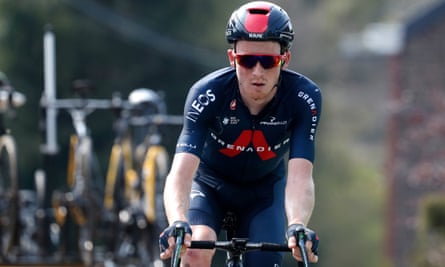
After a transfer, it’s suddenly mountain time. It’s not the rudest of introductions but the Col de Romme-Col de Colombière diptych will whittle the main group down to 15 at best. The mountains jersey should change hands so there will be riders seeking out the early break to stake their claim on the polkadots. Expect a show of strength over the final climbs from a team looking to control the standings – Ineos most obviously, or Jumbo-Visma – and a stage win for a climber who can sprint such as Rigoberto Urán of Colombia or Tao Geoghegan Hart.
Stage nine, Sunday 4 July, Cluses – Tignes 144.9km
Unusually, this year the Tour bypasses the highest and most iconic Alpine passes, and today’s gloriously scenic Cormet de Roselend is about the best we will see of the massif . The long descents after the Col des Saisies and the Roselend will give weaker climbers a chance to get back to the front group before the final sort-out. The winner will probably come from an early move – the likes of Barguil or Nairo Quintana are obvious candidates – but the draggy Tignes finish climb will suit a rider like Alaphilippe or Thomas rather than a lighter pure climber. Then comes a rest day.
Stage 10, Tuesday 6 July, Albertville – Valence 190.7km
This might be more interesting than your average flat “transition” stage because there’s just enough climbing at key points to suggest that the sprint teams might not have it all their own way. If Sagan is feeling frisky he might try to burn off one or two of the heavier brethren, and if Ewan’s Lotto have lost riders who would normally work to control the stage, or if Deceuninck are marshalling Alaphilippe in the yellow jersey, the chances are a break will succeed with an opportunistic win for a rider like Thomas De Gendt or Søren Kragh Andersen.
Stage 11, Wednesday 7 July, Sorgues – Malaucène 198.9km
Given the reduced quota of climbing in the Alps, today’s unprecedented double ascent of the fearsome Mont Ventoux should be when a definitive picture emerges at the top of the classification. The second ascent of the “Giant of Provence” could do serious damage, particularly if the weather is hot. It’s a day for favourites like Pogacar, Roglic or Thomas to show what they have in the locker, but all eyes will be on Colombian Miguel Ángel López, winner of the Ventoux challenge in early June, posting the fastest time for the climb since 2004.
Stage 12, Thursday 8 July, Saint-Paul-Trois-Châteaux – Nîmes 159.4km
There are two scenarios for this run through the gorges of the Ardèche and the hills to the west of the Rhône. Either the race will follow the usual pattern of doomed breakaway, late catch, bunch sprint. Or the mistral will blow from somewhere between north-west and east and all hell will break loose late on as the bunch splinters in the wind. The former scenario favours the sprinters, the latter the strongest team in the race: Ineos or Deceuninck, with Sagan as a wild card. A windy day will offer Thomas or Alaphilippe the chance to gain time on the climbers.
Stage 13, Friday 9 July, Nîmes – Carcassonne 219.9km
The second longest stage of the race – and a rare day of over 200km – has a similar look to the previous one, with no major hills and roads that are innocuous enough in clement conditions but can be brutal in a cross wind. By this stage it should be clear who is the best sprinter and if Ewan is heading to achieve his 2021 target of winning stages in all three Grand Tours, also whether Sagan is en route to take a record eighth Tour green jersey or if he’s being threatened by an all-rounder such as Aussie Michael Matthews or Italian Sonny Colbrelli.
Stage 14, Saturday 10 July, Carcassonne – Quillan 183.7km
Only a few stages in this year’s Tour are hilly enough to deter the sprinters and favour the all-rounders as opposed to the pure mountain goats. This is the second, through Cathar country in the rarely visited eastern Pyrenees. Narrow, twisting roads and constant up and downs favour a breakaway, and the battle to be in it will be desperate as even after two weeks the majority of teams will have yet to win a stage. One for a rider like Olympic champion Greg Van Avermaet, Bauke Mollema or Simon Yates if they are not involved in the overall battle.
Stage 15, Sunday 11 July, Céret – Andorre-la-Vieille 191.3km
This stage is almost bound to see an early escape contest the finish, because although the late climb of the Port d’Envalira is the highest point on the Tour it’s not steep enough to cause huge damage, so any sparring for the overall standings will come within Andorra on the Col de Beixalis. The overall contenders should finish together unless anyone is having an off day; this is a good one for the stage hunters such as Yates or France’s David Gaudu, but also the best descenders such as Bahrain’s Matej Mohoric and old fox Vincenzo Nibali. There then follows a rest day.
Stage 16, Tuesday 13 July, Pas de la Case – Saint-Gaudens 169km

Five days of climbing in the Pyrenees is almost unprecedented for the Tour, and each is very different: today involves shorter, steep ascents, with the main sort-out likely to come on the Col de la Core before the final shootout on the Portet-d’Aspet. By this point in the race, each day’s breakaway will include many of the same riders, with teams getting increasingly panicked if they haven’t yet won a stage. The overall contenders will want this to be a controlled stage, but these roads are eminently suitable for skirmishing involving the likes of Alaphilippe or Daniel Martin of Ireland.
Stage 17, Wednesday 14 July, Muret – Sant-Lary-Soulan 178.4km
The first of two mountain-top finishes that should decide the race. There’s a lengthy, flattish preamble where a large break should gain several minutes – in recent years these have involved as many as 30 riders – while the final 50kms includes a daunting trio of passes, culminating in the hardest finish of the Tour, the super-steep 10 miles to the Col de Portet. López, Roglic and Pogacar will be the main men here, and the stage win should go to the best climber out of the break – a rider like Gaudu.
Stage 18, Thursday 15 July, Pau – Luz Ardiden 129.7km
Shorter and more straightforward than the previous day; the Col du Tourmalet is arguably the most iconic climb in the Pyrenees and Luz Ardiden one of the classic finishes. There is always room for a surprise attack but on paper, this stage should replicate the verdict of the previous day as it will favour exactly the same kind of rider. Again there should be a massive early escape involving climbers who are out of contention overall, but the brevity of the stage means they are liable to be scooped up late on leaving the stage win for whoever is in the yellow jersey.
Stage 19, Friday 16 July, Mourenx – Libourne 207km
The sprinters will have been attempting to survive for the last few days, with this stage and Sunday’s run in to Paris in their minds. That’s enough incentive for most of them but the outcome of the stage may depend on how many of their teammates have got through the mountains as well. Five successive mountain stages may see off more of the domestiques than usual, and it might see off sprinters who really can’t climb like Kristoff or Ewan. So it’s a day for perhaps a rider like Matthews or Colbrelli, who will deal with the mountains better than most.

Stage 20, Saturday 17 July, individual time trial, Libourne – Saint-Émilion 30.8km
This stage visits the village of Montagne, which will seem like a bad joke to the big-boned types who have grovelled through the Alps and Pyrenees. Since last year’s reversal at La Planche des Belles Filles the Tour has fallen back in love with time trials and this one is long enough to create a surprise or two. In theory the Tour will have gone through more than enough mountains since leaving Brittany to ensure that the strongest climber has ample margin to relax on this stage. But that’s far from certain – and therein lies the great fascination of this race.
Stage 21, Sunday 18 July, Chatou – Paris Champs-Élysées 108.4km
The traditional apotheosis. The Tour organisers have meddled with the sprint format only once since first finishing on the Champs in 1975. However, the other Grand Tours have always experimented with time trials on the last day and perhaps it’s time the biggest race of all tried something different. The club run pace start, the champagne drinking en route and the final dash up Paris’s grandest avenue does have a slightly hackneyed feel. Love it or not, it’s still a fantastic sprint.
- Tour de France
Comments (…)
Most viewed.
Official games
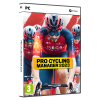
2023 Edition
- Stage winners
- All the videos
Tour Culture
- Commitments
- key figures
- Sporting Stakes
- "Maillot Jaune" Collection
- The jerseys

TOTAL: 3492 km
This will be the first Grand Départ in Italy and the 26th that’s taken place abroad First finale in Nice. Due to the Olympic and Paralympic Games taking place in Paris, the race will not finish in the French capital for the first time.
Two time trials. 25 + 34 = 59km in total, the second of them taking place on the final Monaco>Nice stage. This will be the first time the race has seen a finale of this type for 35 years, the last occasion being the famous Fignon - LeMond duel in 1989.
Apennines (Italy), the Italian and French Alps, Massif Central and Pyrenees will be the mountain ranges on the 2024 Tour route.
The number of countries visited in 2024: Italy, San Marino, Monaco and France. Within France, the race will pass through 7 Regions and 30 departments.
The number of bonus points 8, 5 and 2 bonus seconds go to the first three classified riders, featuring at strategic points along the route (subject to approval by the International Cycling Union)these will have no effect on the points classification. Bonuses of 10, 6 and 4 seconds will be awarded to the first three classified riders at road stage finishes.
Out of a total of 39, the locations or stage towns that are appearing on the Tour map for the first time . In order of appearance: Florence, Rimini, Cesenatico, Bologna, Piacenza, Saint-Vulbas, Gevrey-Chambertin, Colombey-les-Deux-Églises, Évaux-les-Bains, Gruissan, Superdévoluy, Col de la Couillole.
The number of sectors on white roads during stage nine, amounting to 32km in total .
The number of stages: 8 flat, 4 hilly, 7 mountain (with 4 summit finishes at Saint-Lary-Soulan Pla d’Adet, Plateau de Beille, Isola 2000, Col de la Couillole), 2 time trials and 2 rest days.
The number of riders who will line up at the start of the Tour, divided into 22 teams of 8 riders each.
The height of the summit of the Bonette pass in the Alps, the highest tarmac road in France, which will be the “roof” of the 2024 Tour.
The total vertical gain during the 2024 Tour de France.
PRIZE MONEY
A total of 2,3 million euros will be awarded to the teams and riders including € 500,000 to the final winner of the overall individual classification .
Receive exclusive news about the Tour

Accreditations
Privacy policy, your gdpr rights.
- Giro d'Italia
A Beginner's Guide to the Tour de France
All you need to know about the biggest race in the world, from how the race works, and where you can watch all the action
Will Newton
Race news editor.
- Share on Facebook
- Share on Twitter
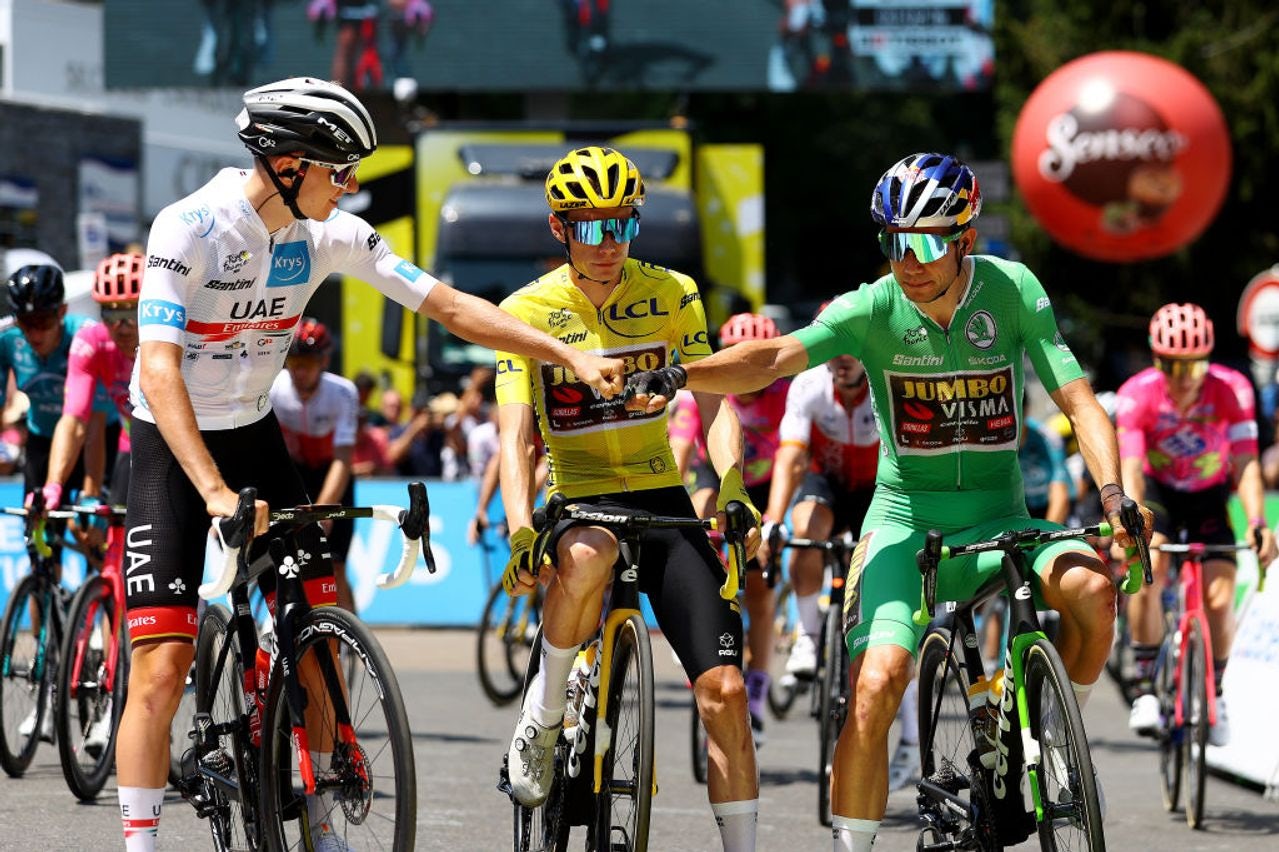
Velo Collection (Michael Steele) /Getty Images
The Tour de France is a bike race cut above all others
The biggest bike race on the planet, the Tour de France , is the pinnacle of the cycling calendar, but what is this race, why is it so famous and how on earth does one win it? If you’ve ever found yourself asking one of these questions then worry not, for this Newcomer’s Guide is going to help you decrypt and decipher this summer’s ‘Big Loop’ around France…
Ask somebody to name a bike race and nine times out of ten that person will reply, ‘the Tour de France’. Ask that same person to explain the Tour de France and you’ll be lucky to be given a coherent sentence devoid of ‘ums’ and ‘ahs’. You see, while the Tour may be one of, if not the most, watched sporting events in the world - with 3.5 billion viewers annually - it’s also one of the most confusing with a rule book almost as long as the route itself.
This confusing aspect of the Tour can be an obstacle to many, so to ease you in we’ve put together this handy guide explaining the basics behind the race - from what is the Tour de France, to how does one win it. Whether you’re a complete newcomer or perhaps an annual Tour watcher, there’ll be something in this guide for you and something that will finally give you an answer to - at least one of - your many questions about the race.
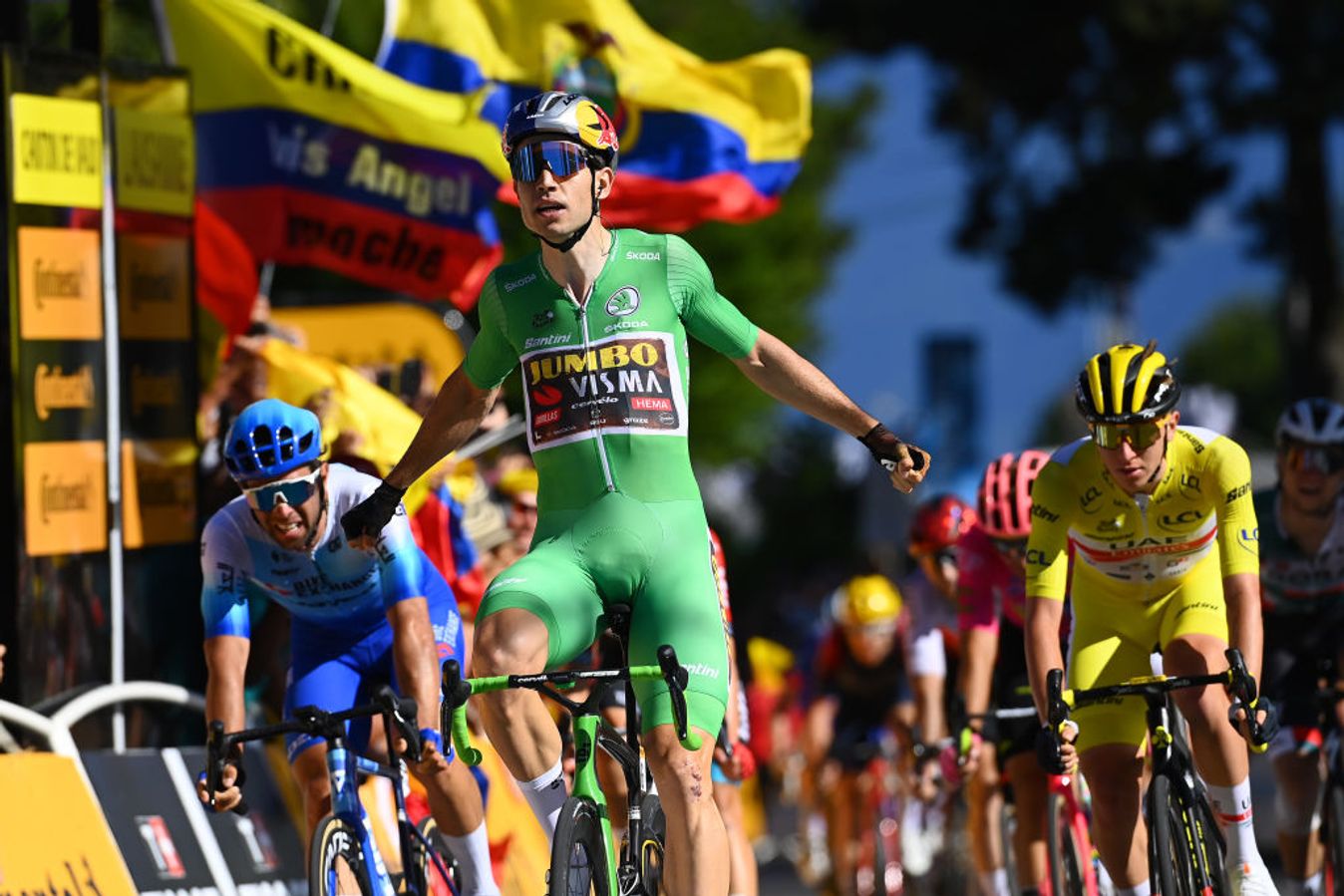
Velo Collection/Getty Images
The Tour is made up of 21 mini races called ‘stages’ - complete them all in the fastest cumulative time and you’ll be crowned the overall winner
What is the Tour de France?
The Tour de France is what’s known as a ‘stage race’, which is a collection of smaller races - or stages - ridden consecutively across a set period of time. In the case of the Tour, this time period encompasses three weeks, or 21 days (23 if we include the two rest days where there’s no racing). There are only two other stage races on the cycling calendar that last for three weeks and those are the Giro d’Italia and Vuelta a España. Together with the Tour, these races are known as the ‘Grand Tours’.
As its name suggests, the Tour takes place in France - although this comes with some caveats. While the majority of the three-week race takes place within mainland France, some stages do occasionally pass through neighbouring countries, like Italy, Spain, Switzerland and Belgium. The race is also known for hosting ‘Grand Départs’ - the term for the celebratory opening stages of the race - in foreign countries. For example, in 2023 the race began with three stages in the Basque Country, an autonomous community of Spain. The 2024 edition, on the other hand, will start with three stages in northern Italy taking in the cycling rich regions of Tuscany, Emilia Romagna, Lombardy and Piemonte.
With the race taking place across France, and across some other European countries, terrain can wildly differ between stages. Some stages stick to the flatlands along the coasts, while others head deep into the mountains. Several stages may also take the form of a ‘time trial’, where riders compete to set the fastest time over a set course after a staggered start. This changing of terrain between stages, and also within stages, is what poses the main challenge to the riders and ultimately dictates who wins the Tour de France overall, but more on that later!
Why is the Tour de France so famous?
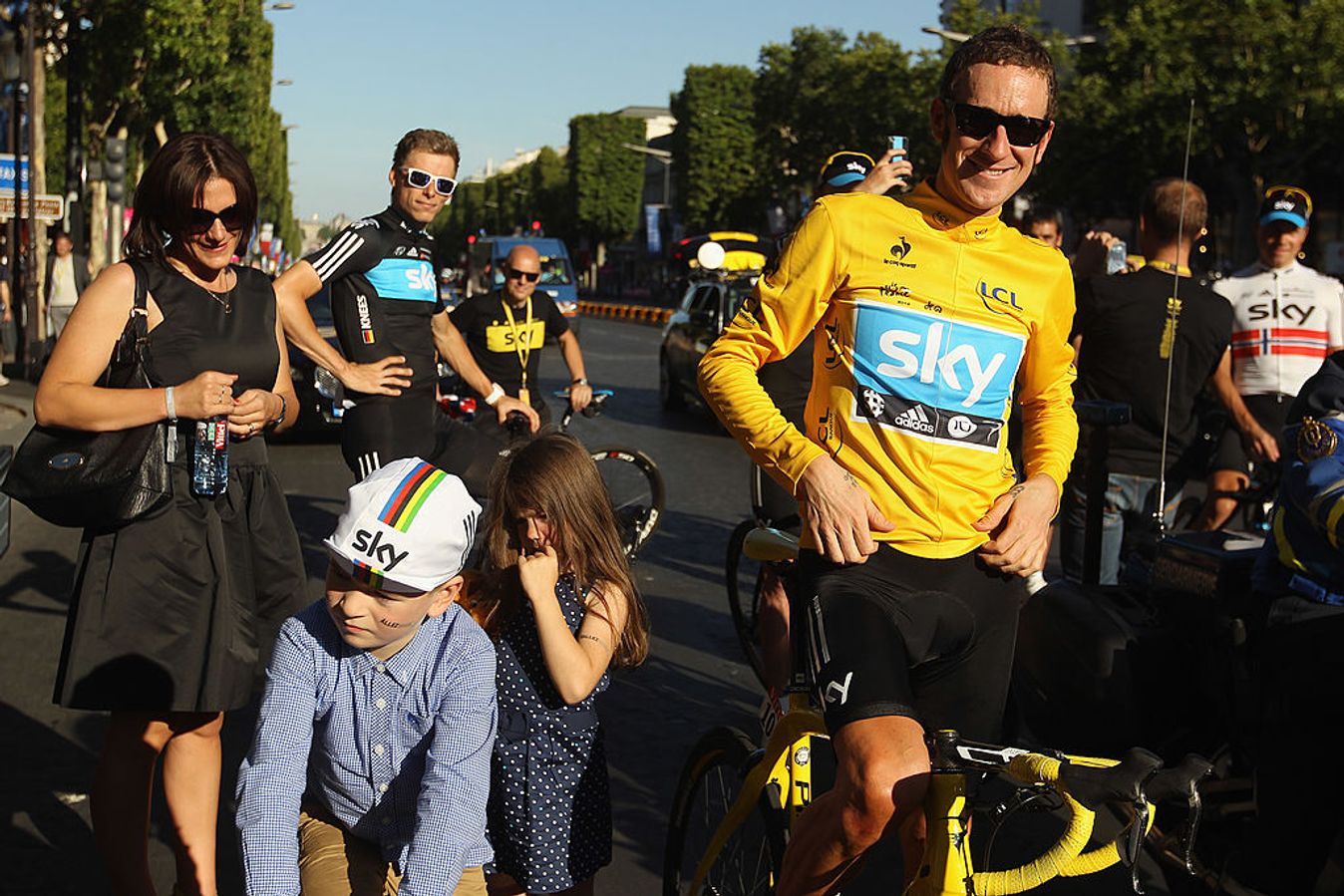
Velo Collection (TDW)/Getty Images.
The maillot jaune is the most iconic jersey in all of cycling
The Tour is the oldest of the three Grand Tours, with its debut edition taking place way back in 1903. It’s also the race which inspired the likes of the Giro and the Vuelta. At 120-years-old, it’s the oldest still-running stage race on the international calendar. There are one-day events which are older, but no professional, multi-day stage race is older than the Tour de France - one of its many claims to fame.
Born from a newspaper marketing scheme, devised by French journalist Henri Desgrange, the first Tour took place in an attempt to boost sales of L’Auto - a nationwide daily newspaper dedicated to sport. This inaugural race only featured six stages, but with each stage covering ~400km it quickly made its way around the perimeter of France. Due to the length of these stages and the comparatively poor technology of the time riders often had to race through the night.
Home favourite Maurice Garin, a man affectionately known as ‘The Little Chimney Sweep’, won this first ever Tour de France, writing his name into cycling’s history books in the process. The race was a sudden hit so Desgrange decided to bring it back the following year, and then the next one, and the one after that. Before long it soon became the go-to event for masochists across Europe to attend and shed blood, sweat and tears over. This blood, sweat and tears made for great stories back in the day and now, fantastic TV.
The race’s longevity and the fact that it has been the site of some of sport’s greatest stories aren’t the only factors which make the Tour so famous, however. In recent decades the race has become truly global with riders from all six of Earth’s major continents not just taking part, but winning too. This globalisation of the Tour has helped it to expand to all four corners of the globe and reach billions of people.
According to the Tour’s organisers, ASO, around 12 million people line up along the route every single year, cheering on their heroes from the roadside. This figure pales in comparison to the race’s total viewers though, which is estimated to be as high as 3.5 billion annually. This mind-boggling figure makes the Tour de France the most watched sporting event in the world, more so even than the World Cup (3.3 billion), Summer Olympics (2 billion), UEFA Champions League (380 million) and Super Bowl (96.4 million).
How does one win the Tour de France?
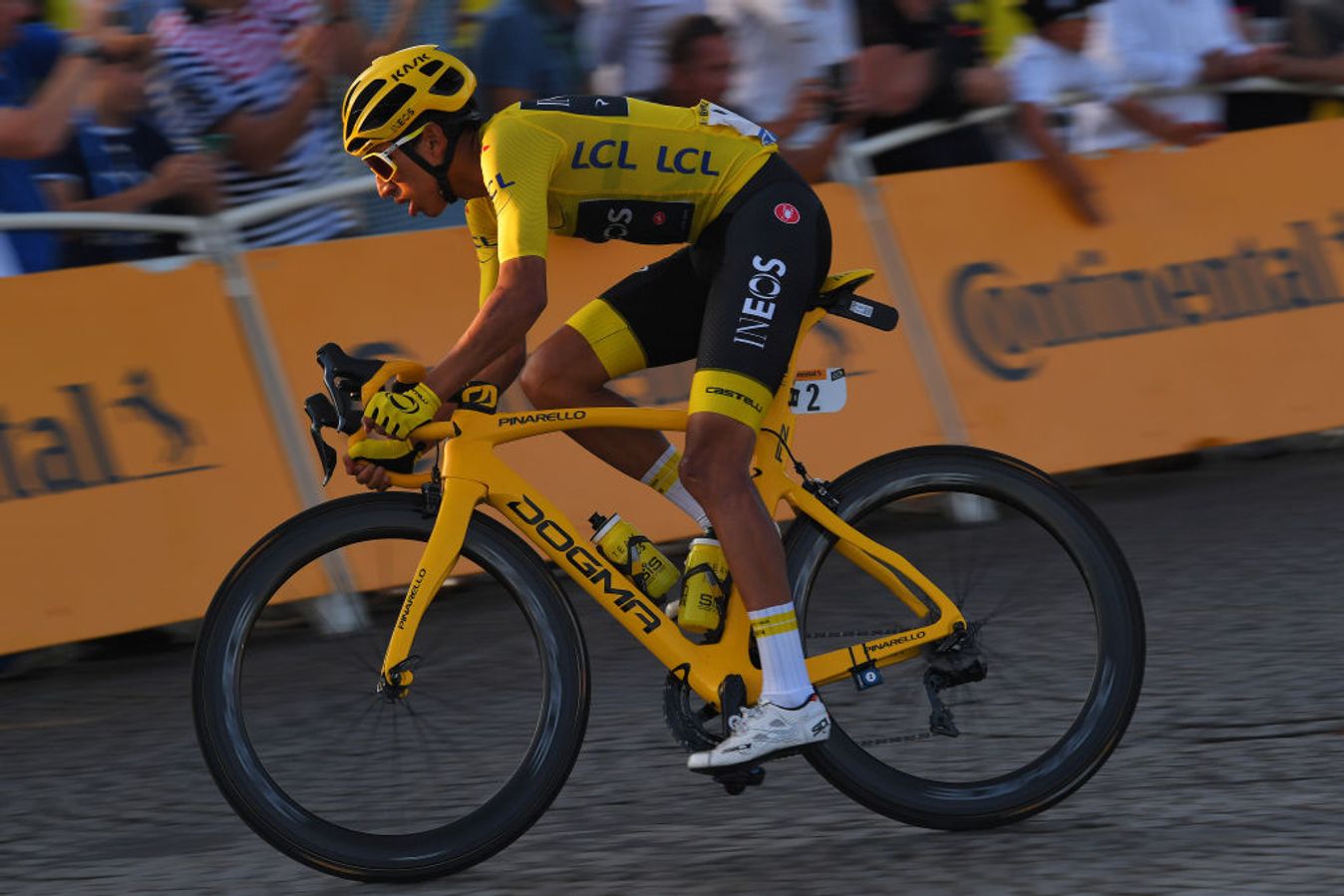
Velo Collection (TDW) /Getty Images
Egan Bernal on his way to winning the Tour de France in 2019
To put it simply, only one rider can win the Tour de France. This is the rider who, once all is said and done, has completed all of the stages in the lowest cumulative time. They’re declared the overall, or general classification (GC), winner and they get to stand on the top step of the podium in Paris at the end of the race, receiving all of the plaudits - and prize money.
But there’s never just one rider who leaves the Tour as a ‘winner’, and this is where things can get quite confusing. First of all, a ‘stage winner’ is crowned at the end of every stage - this is the rider who simply crosses the finish line first. Some riders win multiple stages throughout the three weeks but get nowhere close to winning the race overall, while the overall winner could go the entire three weeks without ever winning a stage. Are you still with us?
And then there are the different coloured jerseys, individual prizes and team prizes. These are handed out to riders at the end of every stage to denote the rider who’s currently leading each respective classification, but they’re not officially ‘won’ until the three weeks is up and the riders cross the finish line on the final stage. Let’s go through each of those in turn now, from the iconic yellow jersey to the lesser-known combativity prize.
Yellow Jersey - The famous maillot jaune , or yellow jersey, denotes the leader of the general classification. As explained above, this is the rider who has completed all of the stages in the lowest cumulative time. This is the biggest prize in the Tour and something that every rider dreams of wearing, although only a handful ever will.
Green Jersey - The maillot vert , or green jersey, denotes the leader of the points classification. Points are accumulated at each stage finish, with a rider being awarded a certain number of points based on their finishing position. The higher they finish, the more points they score.
Different stages have different weightings of points on offer at the finish, with flatter stages offering more and mountain stages less. Points can also be scored at ‘intermediate sprints’ which are placed within a stage, usually around the midway point. In the Tour there’s one intermediate sprint per road stage (so not during time trials).
Polka-Dot Jersey - The maillot à pois , or polka-dot jersey, denotes the leader of the King of the Mountains classification. Like the green jersey, this is a points-based classification where riders score points for being one of the first few over the tops of hills/mountains. Only categorised hills/mountains count towards this classification and the number of points awarded depends on this categorisation.
Hills/mountains are ranked based on their difficulty and assigned either Cat-4, Cat-3, Cat-2, Cat-1 or HC ( hors categorie ) status. Cat-4 climbs offer fewer points, because they’re the easiest, while HC climbs offer the most points, because they’re the toughest. The winner of this jersey can be someone who’s specifically targeting the classification, but it can also go to the overall Tour winner by virtue of them often being at the front of the race day in, day out.
White Jersey - The maillot blanc , or white jersey, denotes the leader of the Young Rider classification, which - like the yellow jersey - is a time-based classification. It’s restricted to riders that are under the age of 26 when the Tour begins. From those riders who are eligible, the one who has completed the stages in the lowest cumulative time wears the jersey.
Team Prize - This prize is awarded to the winner of the team classification, which assesses teams by adding the times of their three best-placed riders each day - in other words, their first three riders across the finish line on each stage. The team with the lowest accumulated time over the three weeks wins. Unlike the classifications explained above, no jersey is awarded to the leaders of this classification - instead members of the leading team wear a yellow number on their backs.
Combativity Prize - The prix de la combativité , or combativity prize, is awarded to the rider who most animates the day’s racing. This is a subjective classification and one that is decided by the race officials. The winner is given a red number to wear the following day, which is then passed onto the next combativity prize winner. A Super Combativity award is also handed out at the end of the three weeks and goes to the rider who has animated the entire race, rather than just a single stage.
Where can I watch the Tour de France?
Now you know what the Tour de France is all about you’re probably itching to start watching it. Fortunately, the 2023 edition is just around the corner with the opening stage set to take place on Saturday, July 1st. Following the Grand Départ in the Basque Country, Spain - which encompasses three stages this year - the race will head to France and take on stages in the perilous Pyrenees and infamous Alps before drawing to a close with a traditional final stage in Paris on Sunday, July 23rd.
We’ll be showing live coverage of every single stage, start-to-finish, in RaceTV on the GCN App. We’ll also have the daily Breakaway show for you to tune into before and after every stage, where our panel of talking heads discuss the upcoming day’s racing and break down the action afterwards. It’s going to be an incredible three weeks of action and a race that you won’t want to miss, so make sure you have an a ctive GCN+ subscription . There’ll also be a ton of additional stuff for you to get your teeth stuck into during the Tour on the GCN App. As well as live coverage of the race, we also have articles covering all of the action, stage-by-stage previews, daily polls and quizzes and much, much more. Scroll through our Home and Racing feeds now to start getting involved with all of that fantastic, additional content.
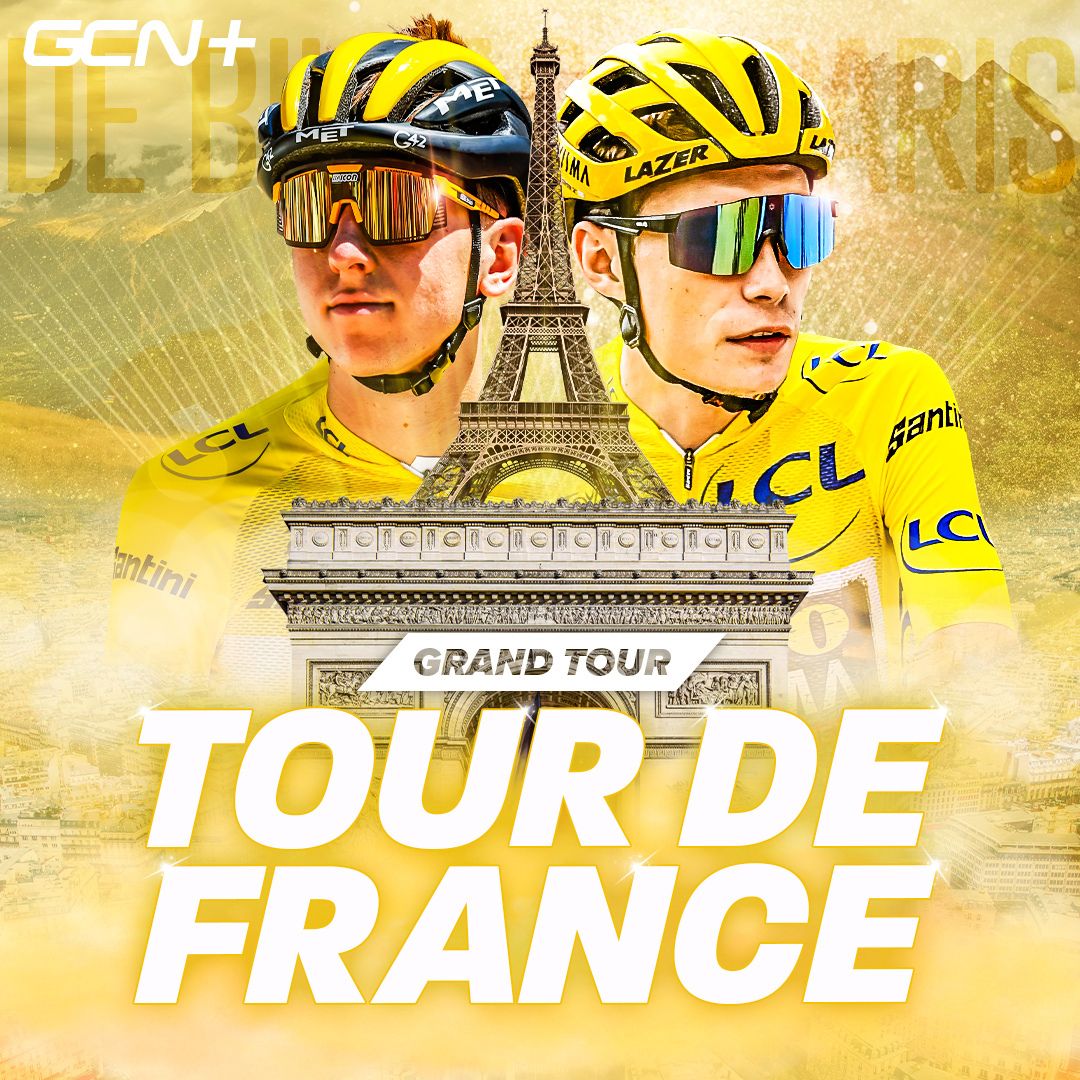MAIN.jpg?w=600&auto=format)
Tour de France
- Dates 1 Jul - 23 Jul
- Race Length 3,401 kms
- Race Category Elite Men
Latest Videos
1 Are Pro Handlebars Getting Higher For More Speed?

2 Narrow Handle Bars, Perfect Bike Saddles & Chain Wax | GCN Tech Clinic

3 Are Super Strong Cyclists Killing Racing? | GCN Show Ep. 591

4 The 2024 Giro D'Italia Story So Far! | GCN Racing News Show

5 Every Cyclist Should Own This Cheap Tool

Will is a Racing News Editor at GCN
Related Content
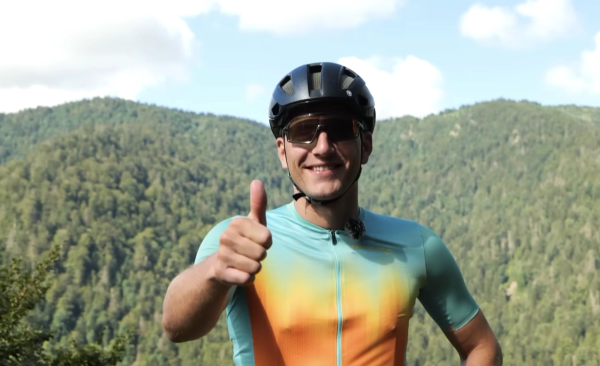
Tour de France bikepacking with Marcel Kittel
Marcel Kittel is a legendary sprinter and an experienced pro, but how did he cope when Conor Dunne took him bikepacking?
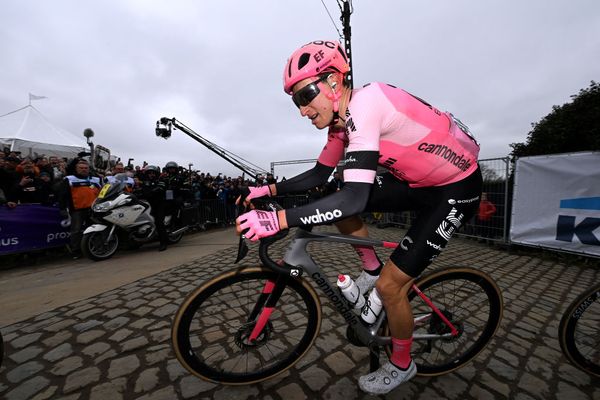
Neilson Powless: Tour de Suisse performance will define my Tour de France role
American returns from break to begin march towards the Tour de France
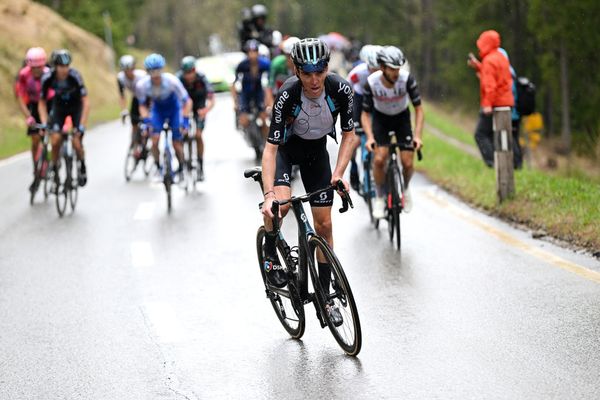
Romain Bardet: The first part of the Tour de France is the hardest
French rider takes aim at the Tour de Suisse and talks motivation and retirement possibilities after 2024
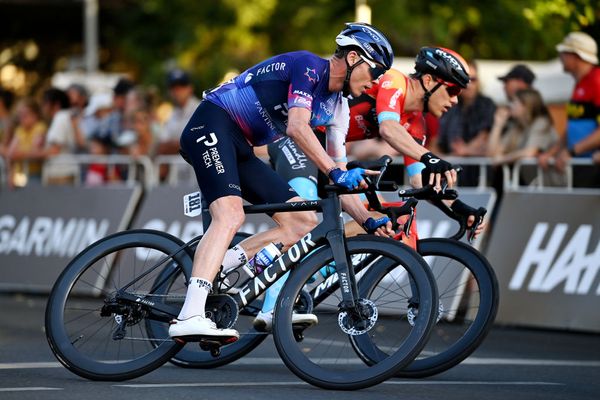
Chris Froome’s Route d'Occitanie performance will help shape Tour de France role
Four-time Tour winner builds up July with final stage race prep
Subscribe to the GCN Newsletter
Get the latest, most entertaining and best informed news, reviews, challenges, insights, analysis, competitions and offers - straight to your inbox

- Home-Use Treadmills
- Folding Treadmills
- Non-Folding Treadmills
- Walking Treadmills
- Compact Treadmills
- Commercial Treadmills
- Treadmills Over $2,500
- Treadmills Under $2,500
- Treadmills Under $2,000
- Treadmills Under $1,500
- Treadmills Under $1,000
- Treadmills Under $500
- Bowflex Treadmills
- Cybex Treadmills
- Diamondback Treadmills
- Horizon Fitness Treadmills
- Landice Treadmills
- Life Fitness Treadmills
- LifeSpan Treadmills
- Matrix Treadmills
- Nautilus Treadmills
- NordicTrack Treadmills
- Precor Treadmills
- ProForm Treadmills
- Schwinn Treadmills
- Sole Treadmills
- XTERRA Treadmills
- Yowza Fitness Treadmills
- Front Drive Ellipticals
- Center Drive Ellipticals
- Rear Drive Ellipticals
- Home Use Ellipticals
- Commercial Ellipticals
- Folding Ellipticals
- Compact Ellipticals
- Elliptical Machines Over $2,500
- Elliptical Machines Under $2,500
- Elliptical Machines Under $2,000
- Elliptical Machines Under $1,500
- Elliptical Machines Under $1,000
- Elliptical Machines Under $500
- Cybex Arc Trainer Ellipticals
- Horizon Fitness Elliptical Reviews
- Landice Ellipticals
- Life Fitness Ellipticals
- Matrix Ellipticals
- NordicTrack Ellipticals
- Octane Fitness Ellipticals
- Precor Ellipticals
- ProForm Ellipticals
- Sole Ellipticals
- Schwinn Ellipticals
- Yowza Fitness Ellipticals
- Top 5 Best-Rated Indoor Cycles
- Upright Exercise Bikes
- Recumbent Exercise Bikes
- Residential Exercise Bikes
- Commercial Exercise Bikes
- Exercise Bikes Over $1,500
- Exercise Bikes Under $1,500
- Exercise Bikes Under $1,000
- Exercise Bikes Under $500
- Diamondback Exercise Bikes
- Landice Exercise Bikes
- Lifecore Exercise Bikes
- Nautilus Exercise Bikes
- NordicTrack Exercise Bikes
- Peloton Bike / Peloton Bike+
- ProForm Exercise Bikes
- Schwinn Exercise Bikes
- Sole Exercise Bikes
- Weight Stack Home Gyms
- Power Rod Home Gyms
- Bodyweight Home Gyms
- Home Gyms Over $2,000
- Home Gyms Under $2,000
- Home Gyms Under $1,500
- Home Gyms Under $1,000
- Home Gyms Under $500
- BodyCraft Home Gyms
- Body Solid Home Gyms
- Bowflex Home Gyms
- Total Gym Home Gyms
- Weider Home Gyms
- TreadClimbers
- Best Water Rowing Machines
- Best Hydraulic Rowing Machines
- Best Hybrid Rowing Machines
- Best Air Rowing Machines
- Best Magnetic Rowing Machines
- Best Rowing Machines Under $ 1000
- Best Rowing Machines Under $ 1,500
- Best Rowing Machines Over $ 1,500
- Strength Training
- Workout Tech
/ Exercise Bikes / ProForm / ProForm Tour De France 1.0
I'm looking for...
- Peloton Bike Alternatives
- Over $1,500
- $1,000 – $1,500
- $500 – $1,000
- Echelon Exercise Bikes
- MYX II Fitness Bike
ProForm Tour De France 1.0 Review
FitRated Editorial Team | Mar 05 2019 - 12:09 pm
This product has been discontinued
Rating: 88.2%

SEE BEST ALTERNATIVES
About FitRated

This ad-free website is supported by its readers. Disclosure : We are compensated by some high quality retailers, but only when our readers buy their products through links on our unbiased elliptical reviews. Thanks so much for your support!
Quick Summary
The ProForm TDF 1.0, now on sale for $999, is a feature-rich exercise bike for all skill levels.
It’s the most affordable of three indoor cycle trainers in the ProForm Tour de France series, but it has the same performance essentials as the higher models.
Highlights include a 48-pound flywheel, 26 configurable gears, 15% incline/decline and iFit technology.
You may not be in Le Tour De France, but that doesn’t mean you can’t experience it.
Learn more from the complete ProForm TDF 1.0 review below.
Rating: 88.2/100. ProForm teamed up with Le Tour de France organizers to design the ultimate collection of indoor cycle trainers. Compared with alternatives from other brands, which are generally very basic, indoor cycle trainers in the ProForm TDF series are especially packed with features that enhance the training experience. It provides ultra-smooth rides with help from a 48-pound flywheel, and it can offer the right amount of resistance whether you’re a novice or an experienced competitive cyclist.
To make workout sessions especially true to life, the TDF 1.0 has an automated ramp. Its uphill/downhill range is an impressive -15% to 15%. ProForm has included 24 training programs that make the most of this feature by synchronizing it with video of scenic tour routes. Additionally the bike is iFit enabled so that unlimited Google Maps training routes and other downloadable programs are available any time.
- Easy to assemble
- 48-pound flywheel
- Quiet magnetic resistance
- Customizable electronic gears (26)
- Pedals with toe cages and clips
- Adjustable seat and handlebars
- Power incline/decline (-15% to 15%)
- 24 built-in workouts that simulate topography of real-life bike routes
- iFit®-enabled
- Watts display shows exertion level
- Smartphone-compatible (Jack and 2″ speakers)
- Wireless heart rate receiver
- Two water bottle holders
- Customers report that replacement parts aren’t readily available
- ProForm’s customer service sometimes gets negative reviews
Introduction
The new ProForm TDF 1.0 is the entry level exercise bike in its series, but it’s packed with power and special features. It’s the best Tour de France exercise bike for shoppers who are satisfied with a simpler console and wouldn’t use the ultra-steep slope options of higher models (the TDF 4.0 and 5.0). Impressive specs range from a 48-pound drive to immersive workout programs that make the most of varied downhill/uphill slope settings. Read on for details about a variety of features.
TDF Programs
The TDF 1.0 has 24 preloaded workouts that replicate Tour de France segments. Each program adjusts the bike’s settings to help simulate specific routes.
Additionally the TDF 1.0 is iFit-enabled. Although it lacks the TDF 5.0’s built-in touchscreen display, it can work with a tablet computer or smartphone running the iFit mobile app. iFit members can virtually train anywhere worldwide by using workout programs designed with Google Maps™ technology. Also available through iFit are customized personal training workouts, video workouts featuring celebrity personal trainers, automated data tracking and other benefits.
ProForm Tour De France 1.0 Features
Compared with other stationary bikes, ProForm Tour de France bikes especially operate like street bikes. For smooth operation the TDF 1.0 has a 48-pound flywheel, and the 26 electronic gears all have customizable ratios. The handlebars are like those on outdoor race bikes and have a non-slip surface. Also to help replicate the outdoor training experience, the ProForm TDF 1.0 has a power incline and decline. It can tilt from -15 percent to +15 percent with electronic controls.
To help riders feel secure at high speeds and on steep inclines, the TDF 1.0 is equipped with pedal cages and foot straps.
The default for data readouts is the Watts Display. It calculates Watts per kilogram and shows readouts in three zones (Endurance, Tempo and Peak) to help the rider stay on track. A full-color touchscreen is an option too; add your tablet computer or smartphone and access iFit workout programming that syncs with the fitness machine. A secure tablet holder is provided.
For heart rate monitoring the ProForm TDF 1.0 is compatible with Bluetooth chest straps.
The bike has a smartphone-compatible port and a set of 2″ speakers.
Warranty & Guarantee
The ProForm TDF 1.0 indoor cycle trainer warranty includes: – Frame: 10 years – Parts: 3 Years – Labor: 1 year
ProForm offers a 30-day money back guarantee.
While most indoor cycle trainers are bare bones, the new TDF 1.0 pairs its heavy drive with data readouts, iPod compatibility, a tablet computer holder and much more. This bike is appropriate for cyclists at all skill levels too… so on sale for $999 with a three-year parts warranty, it’s one of the most enticing bikes in its price class.
Other ProForm Exercise Bikes

Leave a Reply Cancel reply
Save my name, email, and location in this browser for the next time I comment.
By submitting your comment you agree to our Privacy Policy .
This site uses Akismet to reduce spam. Learn how your comment data is processed .
Get curated fitness deals and workout tips from experts. Sent Monthly
This site is protected by reCAPTCHA and the Google Privacy Policy and Terms of Service apply.
Feeling overwhelmed looking for the best fitness gear? Our goal with this website is to make it easier for you.
We compile crucial info about popular fitness equipment, then assign a single rating out of 5 stars with our exclusive algorithm (based on 100s of customer & expert reviews), all to save you time and money meeting your fitness goals.
Review Categories
Most Popular
- Bowflex Max Trainer M7
- NordicTrack Commercial VR25 Elite
- Bowflex TreadClimber TC200
- Bowflex Xtreme 2 SE
- NordicTrack Commercial 1750
Connect With Us
- Follow us on Facebook
- Follow us on Instagram
- Privacy Policy
- Terms & Disclosure
- Discontinued
Copyright by © 2024 FitRated. All Rights Reserved.
- Subscribers
- EDITORS PICK // TOP TWO CYCLING LIGHTS FOR 2023
- TOP TWO CYCLING LIGHTS FOR 2023
- TECH TUESDAY: DEALINGS WITH SHIMANO DI2
- ALL ABOUT WIND TRAINERS AND INDOOR CYCLING
- WHAT YOUR PRESTA VALVE CAPS ARE ACTUALLY FOR
- BIKE TEST: ALLIED ECHO
- ALL ABOUT AIR & HOW-TO FIGHT FLAT TIRES
- PINARELLO F SERIES – WHAT TO KNOW ABOUT THE ALL-NEW RACE BIKES
- CANNONDALE UNVEILS SLEEK 2023 ROAD LINE-UP
- THROWBACK THURSDAY, 2015: ALEX DOWSETT BREAKS THE HOUR RECORD

2021 TOUR DE FRANCE STAGE 1 PROFILE
June 26 - 123 miles.

In a post card type scenery, going through Locronan and Quimper, stage one of the 2021 Tour de France will offer no respite. The never ending accelerations due to the frequent changes in direction, the windy parts in the Monts d’Arrée and a finish at the top of 2 mile-long hill at an average 5.7% (including parts at 14%) will crown one hell of a puncher. – Christian Prudhomme
FAVORITE RIDERS
- Sam Bennett
- Peter Sagan
- Mathieu van der Poel
- Wout van Aert
STAGE 1 MAP

Get real time updates directly on you device, subscribe now.
2021 TOUR DE FRANCE STAGE 2 PROFILE
CHRIS FROOME MAKES TOUR DE FRANCE TEAM AS SUPER DOMESTIQUE
A MOMENT IN TIME, 2011: WHEN THE UCI STRIPPED MAVIC AT THE TOUR DE FRANCE
THROWBACK THURSDAY, 2008: MEMORIES OF TEAM LANCE – BEFORE THE FALL
BREAKING NEWS: CAVENDISH GETS HIS CHANCE TO BEAT MERCKX
WATCH: TEAM QUICK STEP BIDS ADIEU TO MARK CAVENDISH
Comments are closed.
- Tour de France
- Giro d'Italia
- La Vuelta ciclista a España
- World Championships
- Milano-Sanremo
- Amstel Gold Race
- Tirreno-Adriatico
- Liège-Bastogne-Liège
- Il Lombardia
- La Flèche Wallonne
- Paris - Nice
- Paris-Roubaix
- Volta Ciclista a Catalunya
- Critérium du Dauphiné
- Tour des Flandres
- Gent-Wevelgem in Flanders Fields
- Clásica Ciclista San Sebastián
- UAE Team Emirates
- Arkéa - B&B Hotels
- Astana Qazaqstan Team
- Alpecin-Deceuninck
- Bahrain - Victorious
- BORA - hansgrohe
- Decathlon AG2R La Mondiale Team
- EF Education-EasyPost
- Groupama - FDJ
- INEOS Grenadiers
- Intermarché - Wanty
- Lidl - Trek
- Movistar Team
- Soudal - Quick Step
- Team dsm-firmenich PostNL
- Team Jayco AlUla
- Team Visma | Lease a Bike
- Grand tours
- Top competitors
- Final GC favorites
- Stage profiles
- Riders form
- Countdown to 3 billion pageviews
- Favorite500
- Profile Score
- Stage winners
- All stage profiles
- Race palmares
- Complementary results
- Finish photo
- Contribute info
- Contribute results
- Contribute site(s)
- Results - Results
- Info - Info
- Live - Live
- Game - Game
- Stats - Stats
- More - More
- »
- Stage 1 (ITT)
- Giro d'Italia Donne
- Riders to start 0
- Start 16:00
- Autosync Sync off
- #Online # 1078
- Show keypoints
- 13 .. We will be back tomorrow.
- 13 .. Thanks for following our LiveStats feed.
- 13 .. Vote for your rider of the day. poll closed
- 13 .. Check here the PreviewStats for Tour de France | Stage 2 .
- 13 5 .. Number of different nationalities in the top-10 of today.
- 13 .. The last rider from Belgium leading the points GC was GILBERT Philippe in 2011.
- 13 .. 132nd time for SOLER Marc (UAE Team Emirates) at finish in 16.45,89 (47.241 km/h).
- 13 .. Third place for POGAČAR Tadej (UAE Team Emirates).
- 13 .. VAN AERT Wout (Jumbo-Visma) comes in second place.
- 13 .. LAMPAERT Yves (Quick-Step Alpha Vinyl Team) wins!
- 13 .. 15th time for PIDCOCK Thomas (INEOS Grenadiers) at finish in 15.41,11 (50.493 km/h).
- 13 .. PIDCOCK Thomas (INEOS Grenadiers) overtakes NAESEN Oliver (AG2R Citroën Team)
- 13 .. 21st time for PIDCOCK Thomas (INEOS Grenadiers) at time point 1 in 7.41,38 (51.497 km/h).
- 13 .. Crash by HONORÉ Mikkel Frølich (Quick-Step Alpha Vinyl Team)
- 13 .. All riders have started!
- 13 .. SOLER Marc (UAE Team Emirates) just started.
- Race events
- Time splits table
- GC prediction
- Virtual GC after timepoints
- GC positions
- Breakaway gap
- Riders per team
- Riders per nation
- Last victory
- Grand tour stage wins
- Career points
- Season results
- Performance in monuments
- Best stage result
- GC Teammates
Grand Tours
- Vuelta a España
Major Tours
- Volta a Catalunya
- Tour de Romandie
- Tour de Suisse
- Itzulia Basque Country
- Milano-SanRemo
- Ronde van Vlaanderen
Championships
- European championships
Top classics
- Omloop Het Nieuwsblad
- Strade Bianche
- Gent-Wevelgem
- Dwars door Vlaanderen
- Eschborn-Frankfurt
- San Sebastian
- Bretagne Classic
- GP Montréal
Popular riders
- Tadej Pogačar
- Wout van Aert
- Remco Evenepoel
- Jonas Vingegaard
- Mathieu van der Poel
- Mads Pedersen
- Primoz Roglic
- Demi Vollering
- Lotte Kopecky
- Katarzyna Niewiadoma
- PCS ranking
- UCI World Ranking
- Points per age
- Latest injuries
- Youngest riders
- Grand tour statistics
- Monument classics
- Latest transfers
- Favorite 500
- Points scales
- Profile scores
- Reset password
- Cookie consent
About ProCyclingStats
- Cookie policy
- Contributions
- Pageload 0.1154s

2023 Tour de France Stage 1 Preview
Bilbao > Bilbao 182km

It’s time to get the 2023 Tour de France started. The peloton is in the Basque Country, a place where people are fanatical about their cycling. The crowds will be immense, the atmosphere electric, and the racing should match it. There’s no boring sprint or TT to start with, we’re straight into Basque Country climbs. The riders are faced with a hilly stage, with a wall climb near the finish, but will the GC men fight it out for the first yellow jersey?
Cloudy, but it should stay dry.
Côte de Vivero marks the start of the finale of the stage. It’s a cat 2 climb, 4.4km at 7%, and promises attacks. The approach will remind you of Milano-Sanremo and the run for the Poggio, it’s going to be crazy fast as everyone knows positioning will be crucial with the initial slopes going over 10%. From the crest there’s 27km to go, the first 2.5km of this is a horrible false flat, before a fast descent.
Côte de Pike (Pike Bidea) is the main event of the day, 2km at 9.4%, with a maximum of 18.8%. It’s the type of wall climb you regularly see in this part of the world, it’s used in the Getxo race, I can’t wait to see it in the biggest race in the world. It’s horribly steep, and from the crest there’s just 9.5km to go.
The finish isn’t flat either, it’s a rather grippy looking drag up to the line. Those without a good sprint could lose a few seconds in the final 200m.
Normally, the break rolls off the front in the opening Tour stage, but not this time round, it has a better than usual chance of going all the way to the line. There are two climbs in the opening 15km, which is perfect for puncheurs who want to escape, I wonder if any team will try to control the opening kilometres and try to install a bit of order to proceedings. Jumbo-Visma and Alpecin-Deceuninck will have eyes on this stage, controlling the early kilometres is vital to ensuring they don’t have to use up too many riders in the chase, especially if you are Jumbo-Visma.
The pace throughout the day will be high, this is the opening stage of the Tour de France after all, which will make it hard for the break to win. The key point for me is the Vivero climb, this is where van der Poel and Van Aert are likely to attack. The reason they’ll go here is the Pike climb is too hard for them to stay with Pogačar and Vingegaard, if they want to win the stage they need to attack earlier. Vivero is still a tough climb, even for them, but it’s the perfect launchpad for non-GC riders. Remember, a grand tour is all about carefully managing your resources, especially for GC riders, but the lure of the yellow jersey could tease a few in to attacking and throwing caution to the wind. If a perceived threat attacks, UAE and Jumbo-Visma will have to respond, it really is a beautifully designed stage.
If the attackers don’t manage to escape the bunch before Pike Bidea, then it’s going to be our first instalment of Pogačar v Vingegaard. If riders are already up the road, I doubt if either rider will throw in a big move, there’s no point if the yellow jersey isn’t up for grabs.
What about the Basque riders? Pello Bilbao will have his eyes on this stage, winning on home roads would be a once in a lifetime opportunity. Bahrain isn’t strong enough to chase down the likes of WVA and MVDP, if Bilbao wants to win this stage, he needs to follow their attacks on the Vivero climb, but will that spark a chase from other GC teams? He won’t care, this is his chance to wear the yellow jersey in Bilbao, he must go with the early moves.
The finale to the stage is a little like stage 3 in 2019, where Alaphilippe attacked from the GC group and the main GC contenders either couldn’t or chose not to follow him. Everyone will know what’s coming on the Vivero climb, but that doesn’t mean you can follow or stop it. The difference compared to 2019 is the distance from home, I would expect a small group to go clear at this point and stay away until the end, this group should contain some of the finest bike riders on the planet, but will UAE want to try and chase it down for Pogačar? Don’t be fooled by all the ‘too early to take yellow’ nonsense, the guy is a born winner who loves nothing better than winning bike races.
Another possibility is everyone waiting until Pike Bidea. For the likes of Van Aert and van der Poel this would be a big mistake, but maybe the pace will be too high on Vivero to attack. If the race is all together at this point, we’ll see the GC riders come out to play and the climb will be too hard for the puncheurs, even Van Aert.
The late attack option on the Vivero climb is the tactic I see van der Poel employ, but you can’t write off it being a GC day, it really depends on the attitude of UAE and Jumbo-Visma. Whatever happens, it’s going to be fucking brilliant.
Tadej Pogačar – will he fancy a crack at yellow? Of the GC riders, he’s got the best finish, the uphill rise to the line is perfect for him. UAE have a strong enough team to control the final two climbs and set up a GC sprint, but do they want to use up energy for the sake of a stage win? If Pogačar launches a huge attack on Pike Bidea, he could drop most of his rivals, but I’m not so sure about Vingegaard. If they go solo, Vingegaard might not work with him, making the attack pointless, but imagine if he managed to drop him. That would be a huge psychological blow so early in the race, but I’m not sure it’s likely.
Jonas Vingegaard – doesn’t have to do anything silly, just follow any attacks that come from Pogačar. Will Jumbo-Visma attack and try to drop Pogačar? He doesn’t have much racing in his legs, and they might sense a chance of striking early, but that’s risky. It will also depend on where Wout is at that point, if he’s up the road then don’t expect attacks from Vingegaard.
Wout Van Aert – this is a big chance to move into the yellow jersey, something he did last year, but Pike Bidea will be a huge challenge for him. The final kilometre of the climb averages 12.4%, there’s no guarantee he can be the best on that type of hill. Okay, last year he dropped all the GC riders on the final climb in the Calais stage, but that was only 1km at 7.2%, this is a different kettle of fish. The Vivero climb is good for him, but his chances of winning the stage depends on who manages to go with him, he’ll be a little worried if a climber manages to go with him, but he’ll still go for it. If he waits for Pike Bidea, he’s going to find it hard to hold on, and there’s not much road to come back to the front group before the final kilometre.
Mathieu van der Poel – yeah, he won on Mûr de Bretagne, but that is 2km at 6.9%, nothing like the hills in this stage. If he wins this stage, he’ll have to be climbing better than ever before, which is possible. The problem could well be Van Aert, over the last couple of years he’s been much better at climbing but van der Poel’s coach has said he’s been producing numbers they’ve never seen before, so it’s game on!
Tom Pidcock – can he follow the best on the climbs? If on top form, he can, but I’m not sure he’ll currently has those legs.
Julian Alaphilippe – another who doesn’t seem to have the form required to win, but I hope I’m wrong. Julian loves this part of the world; he’ll be dreaming of yellow.
Pello Bilbao – what a story it would be if he won, I’m sure the headline writers would have a field day. I hope he attacks from distance, waiting until the end would be a mistake with Pogačar and Vingegaard likely to be too strong for him.
Mattias Skjelmose – comes into the Tour as one of the best riders in the world. He won a stage and the GC in Tour de Suisse and followed that up by winning the Danish Road Race, he would have probably won the ITT too had it not been for a mechanical. The young rider has it all in front of him, he could become one of the greats of the sport. He can climb, TT and has an explosive sprint, Lidl – Trek, have a superstar just about to hit the big time. This is a good stage for him, but will he wait and try to stay with Pogačar and Vingegaard, or attack early?
Michael Woods – going very well just now, and he loves double-digit gradients.
Omar Fraile – bet your hat on him being in the break, he’d love to be in the KOM jersey at the end of the day and guarantee himself a trip to the podium. The problem is that the Vivero climb is a cat 2, which means he’d need to take points on it to ensure he’s in polka dots.
Giulio Ciccone – won the final stage at the Dauphiné, he’d love to start this race with a stage win and a yellow jersey. He won’t beat Pogačar and Vingegaard, so he needs to attack from distance.
Rui Costa – form is currently very good; he’ll be among several riders looking to attack from distance.
Matej Mohorič – another with good form, and that includes on double-digit gradients. The issue could be Bilbao, it all depends on whether Bahrain ride for him.
Prediction Time
This is very hard to call.
The more I look at Pike Bidea, including rewatching the 2022 edition of Getxo, the more I think it’s too hard for Van Aert and van der Poel. I still think someone will attack on the Vivero climb and see what happens, the success of such a move depends on who is in the group. Behind them, UAE will have to decide if they want to go all in for the stage win, it’s not the most difficult stage for them to control. Is it too early for Pogačar to take yellow? I’m not sure his mind works that way.
I’ll take a win for Tadej Pogačar .
- Click to share on Facebook (Opens in new window)
- Click to share on Twitter (Opens in new window)
Leave a Reply Cancel reply
Privacy overview, discover more from cycling mole.
Subscribe now to keep reading and get access to the full archive.
Type your email…
Continue reading
You must be logged in to post a comment.

IMAGES
COMMENTS
All of our inspiring athletes compete with type 1 diabetes. As the world's first all-diabetes pro cycling team, we show what is possible with diabetes. ... Tour de Hellas. 19 May 2024. Gran Premio New York City. 23 May - 25 May 2024. Tour of Estonia. 29 May 2024. Circuit Franco-Belge. 8 Jun 2024.
Team Novo Nordisk, a professional cycling team made up of riders with type 1 diabetes, harbors a dream of competing at the Tour de France, the holy grail of road cycling. CNN values your feedback 1.
The Tour de T1D is a large scale outdoor bike ride with a goal of raising funds and awareness for Type 1 Diabetes. There are many ways to participate: 3 great road routes (25, 55 and 100 KM) and a 6.5 KM flat trail route in the Copeland forest ideal for cyclists of all ages and abilities, some who want to walk and even some who will decide to run it!
Type 1 Diabetes (T1D) is an autoimmune disease that occurs when the body's immune system directs its attack on cells in the pancreas that make insulin. As it frequently and mostly occurred in children, it used to be called "Juvenile Diabetes".
The Tour de T1D is an annual outdoor cycling event held in Ontario to raise awareness and funds for Type 1 Diabetes.
MEET TYPE1DETOUR. We are Chris and Amanda. We are a full-time RV family of 4 traveling with our 2 daughters. Chris and our oldest daughter both live with Type 1 Diabetes. We have been documenting our journey to encourage others with a medical condition to get out and live the life you love. We began our full-time travel journey in July 2021 and ...
The Tour de Cure is the American Diabetes Association's premier cycling event and takes place in 44-states with over 60,000 participants. ... We recognize riders with type 1 or type 2 diabetes as ...
Welcome to Type1Detour, we are a fulltime RV family of 4 with two of us living with Type 1 Diabetes, documenting our journey to encourage others to get out a...
The 2021 Tour de France will be broadcast around Europe and Eurosport. A subscription to Eurosport Player costs £6.99 for a single month, £4.99 for a year-long monthly pass, or £39.99 for a 12 ...
Stage 1 » Brest › Landerneau (197.8km) Julian Alaphilippe is the winner of Tour de France 2021 Stage 1, before Michael Matthews and Primož Roglič. Julian Alaphilippe was leader in GC.
Stage one, Saturday 26 June, Brest - Landerneau 197.8km. The Tour opens with a loop through France's cycling heartland, home to heroes of the past such as the five-times winner Bernard Hinault ...
Alexander Kristoff is the winner of Tour de France 2020 Stage 1, before Mads Pedersen and Cees Bol. Alexander Kristoff was leader in GC. ... Parcours type: ProfileScore: 46. Vert. meters: 1597. Departure: Nice. Arrival: Nice. Race ranking: 1. Startlist quality score: 1662. Won how: Sprint of large group.
The number of riders who will line up at the start of the Tour, divided into 22 teams of 8 riders each. 2802 m. The height of the summit of the Bonette pass in the Alps, the highest tarmac road in France, which will be the "roof" of the 2024 Tour. 52 230 m. The total vertical gain during the 2024 Tour de France. PRIZE MONEY
Stage 1 (ITT) » Copenhagen › Copenhagen (13.2km) Yves Lampaert is the winner of Tour de France 2022 Stage 1 (ITT), before Wout van Aert and Tadej Pogačar. Yves Lampaert was leader in GC.
The Tour de France is what's known as a 'stage race', which is a collection of smaller races - or stages - ridden consecutively across a set period of time. In the case of the Tour, this time period encompasses three weeks, or 21 days (23 if we include the two rest days where there's no racing). There are only two other stage races on ...
Quick Summary. The ProForm TDF 1.0, now on sale for $999, is a feature-rich exercise bike for all skill levels. It's the most affordable of three indoor cycle trainers in the ProForm Tour de France series, but it has the same performance essentials as the higher models. Highlights include a 48-pound flywheel, 26 configurable gears, 15% ...
2021 TOUR DE FRANCE STAGE 1 PROFILE. June 26 - 123 miles. In a post card type scenery, going through Locronan and Quimper, stage one of the 2021 Tour de France will offer no respite. The never ending accelerations due to the frequent changes in direction, the windy parts in the Monts d'Arrée and a finish at the top of 2 mile-long hill at an ...
Summary. Stage 12: Briancon to Alpe d'Huez, 166km. Summit finish on famous Alpe d'Huez. Three hors categorie climbs. Second time up Col du Galibier in two days. Vingegaard in yellow jersey as ...
Type 1st 2nd 3rd 4th 5th 6th 7th 8th 9th 10th 11th 12th 13th 14th 15th "flat" stage finish: 50: 30: 20: 18: 16: 14: 12: 10: 8: 7: 6: 5: 4: 3: 2 ... At the end of the Tour de France, the cyclist leading the points classification is the winner of the green jersey. Historical. The rules have varied over the years. When the system started in 1953 ...
Follow Tour de France 2022 Stage 1 (ITT) here. Live situation and background statistics and information on riders. ... Type Keypoint; 6.6: 0: Timing point: 13.2: 0: Finish: show all keypoints. Show keypoints; Preliminary results at T1 # Rider Time + Avg; 1: LAPORTE Christophe: 7.29,54: 52.854: 2: MOLLEMA Bauke:
Photograph two types of cat is one of the Day Two tasks of the Trillion Trinket Trawl minigame in Genshin Impact's Iridescent Arataki Rockin' for Life Tour de Force of Awesomeness event. Luckily ...
Côte de Pike (Pike Bidea) is the main event of the day, 2km at 9.4%, with a maximum of 18.8%. It's the type of wall climb you regularly see in this part of the world, it's used in the Getxo race, I can't wait to see it in the biggest race in the world. It's horribly steep, and from the crest there's just 9.5km to go. Finale
United Airlines - Airline Tickets, Travel Deals and Flights If you're seeing this message, that means JavaScript has been disabled on your browser, please enable JS ...